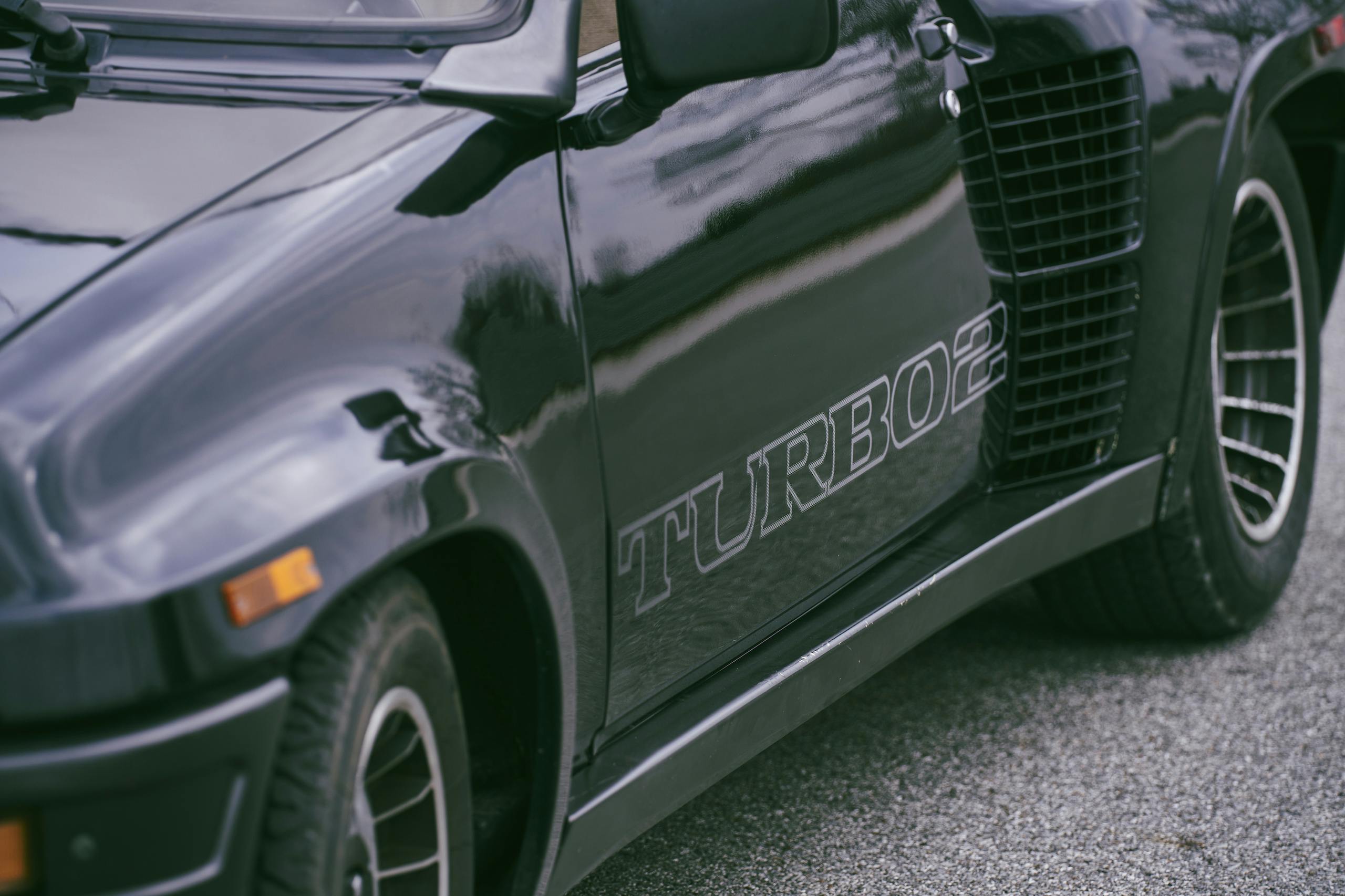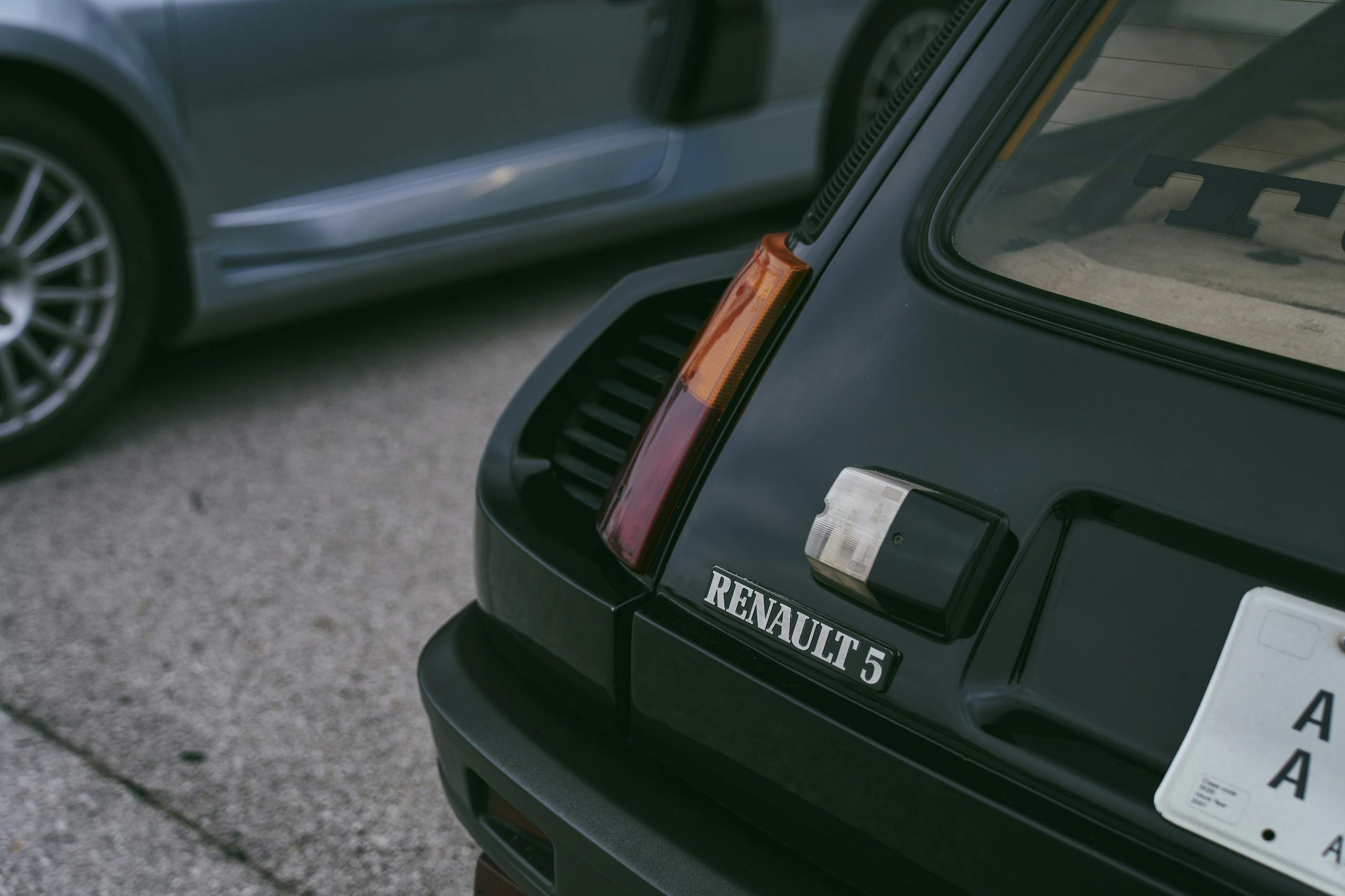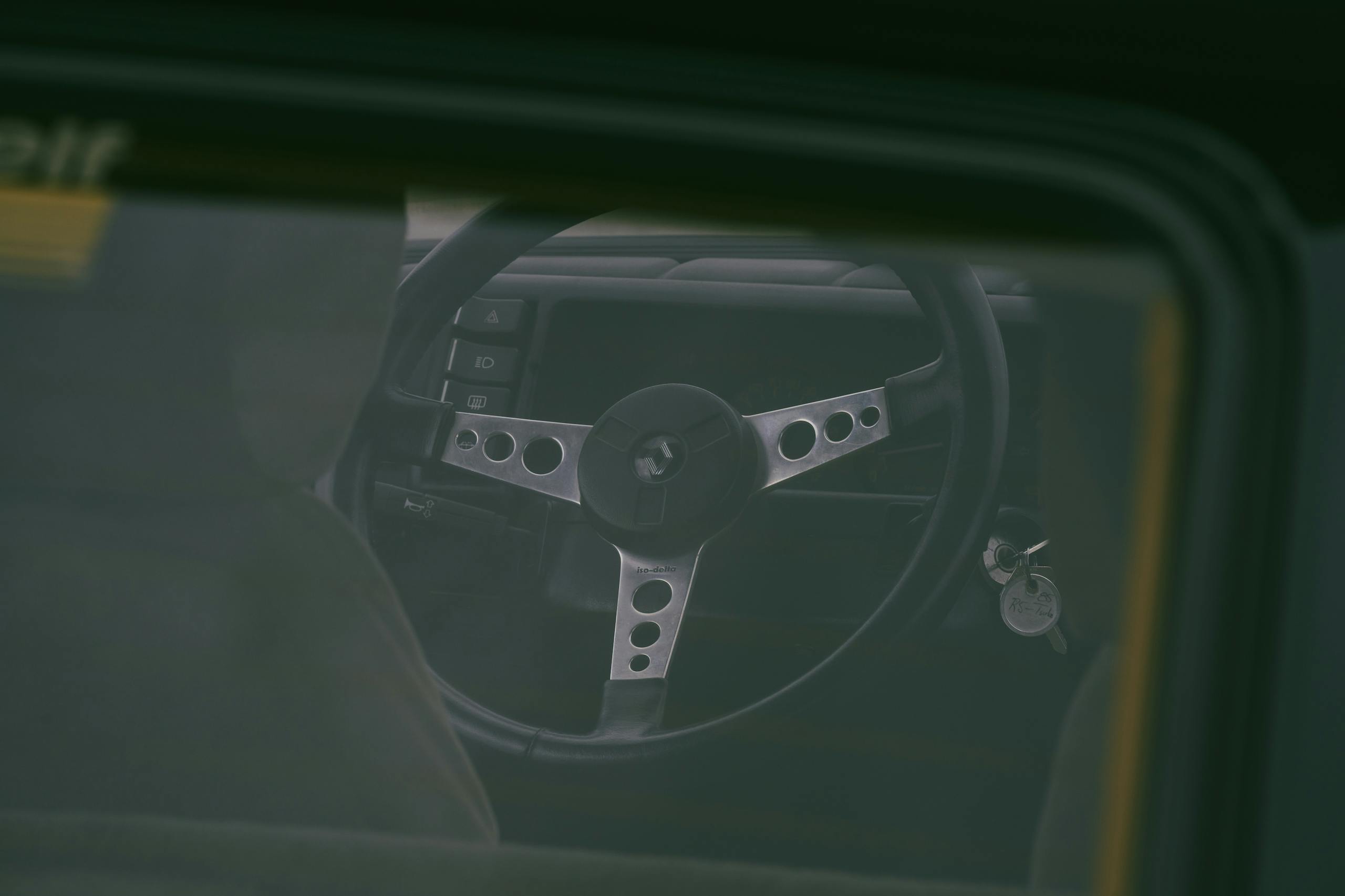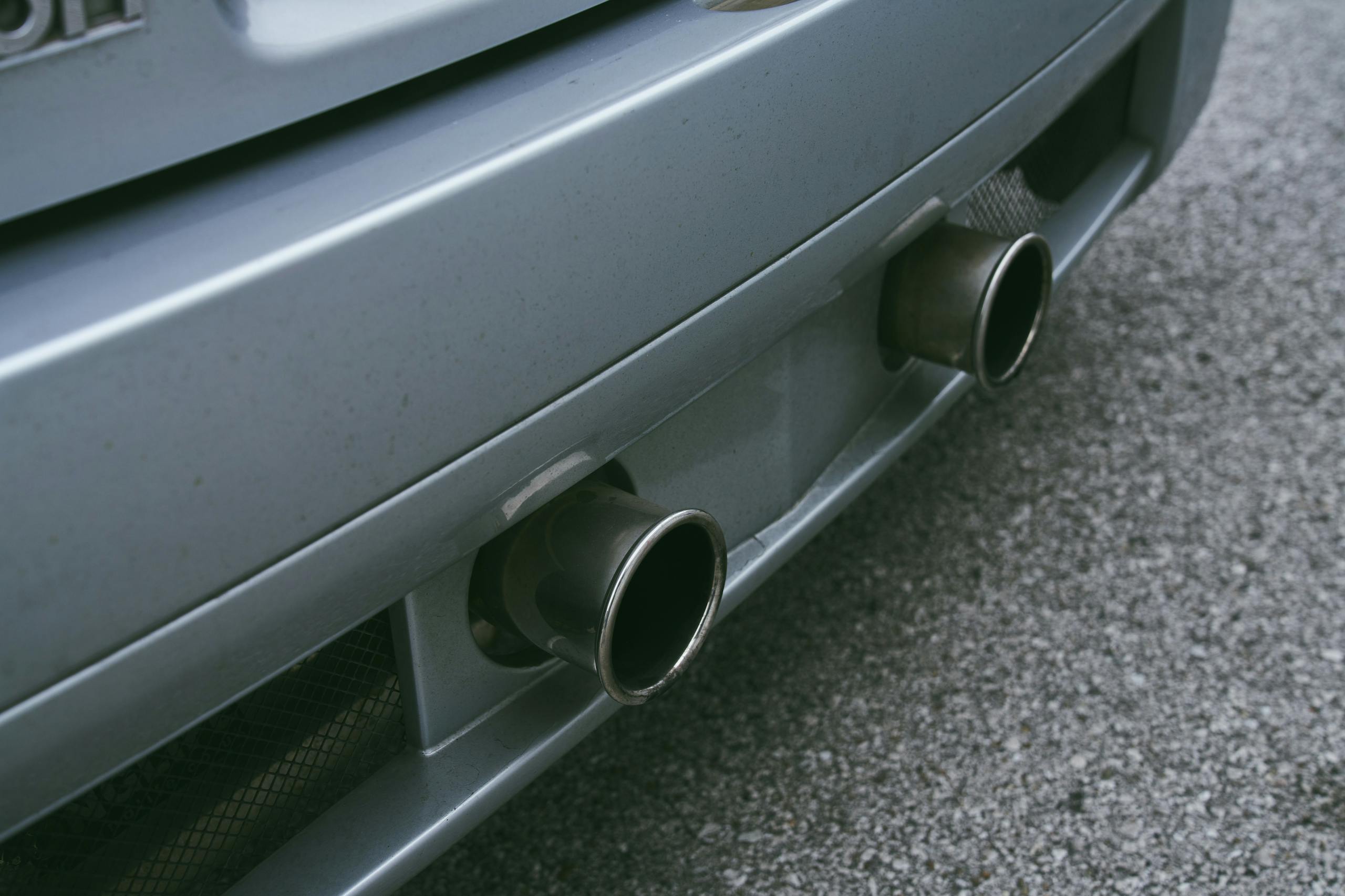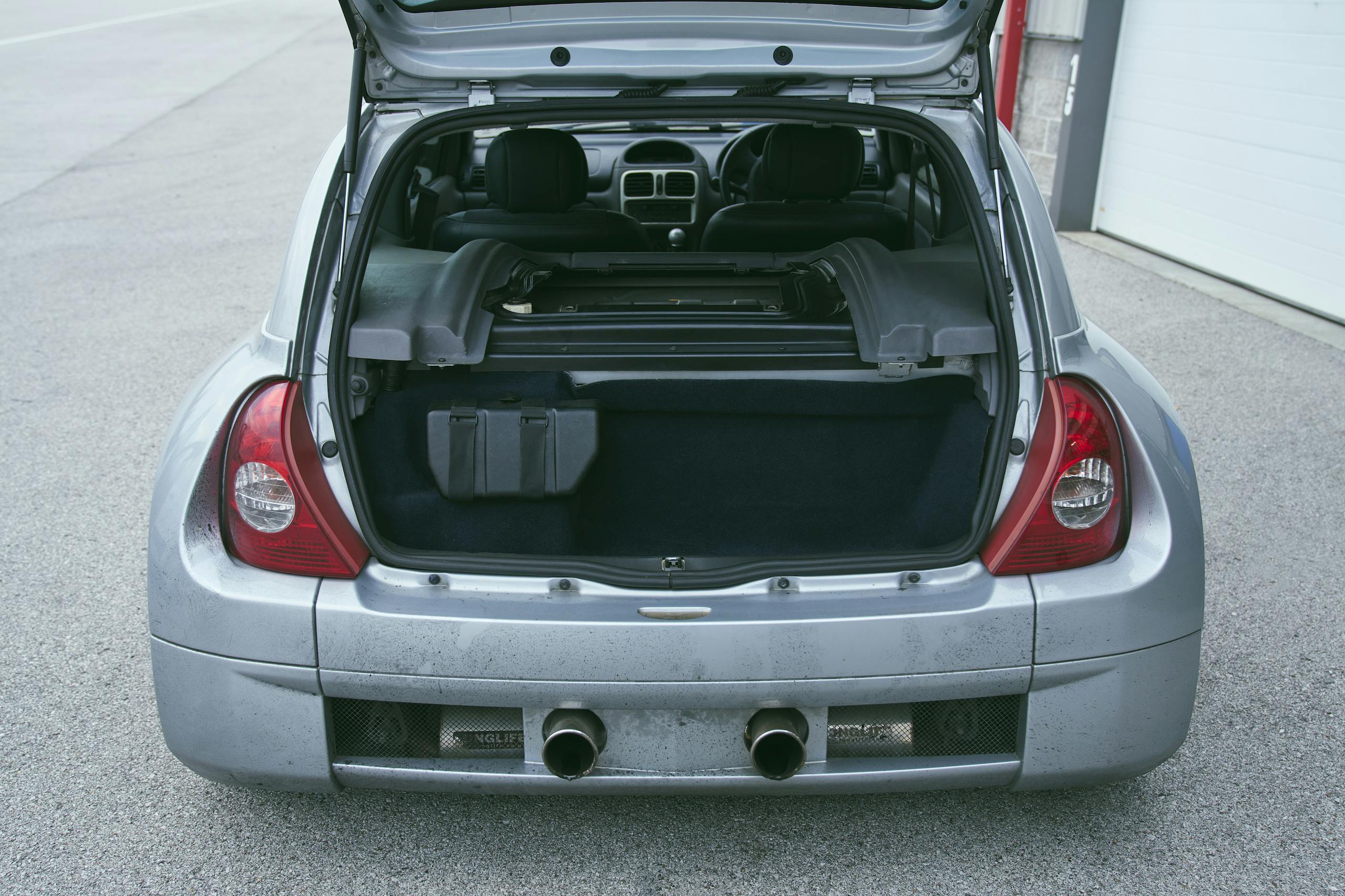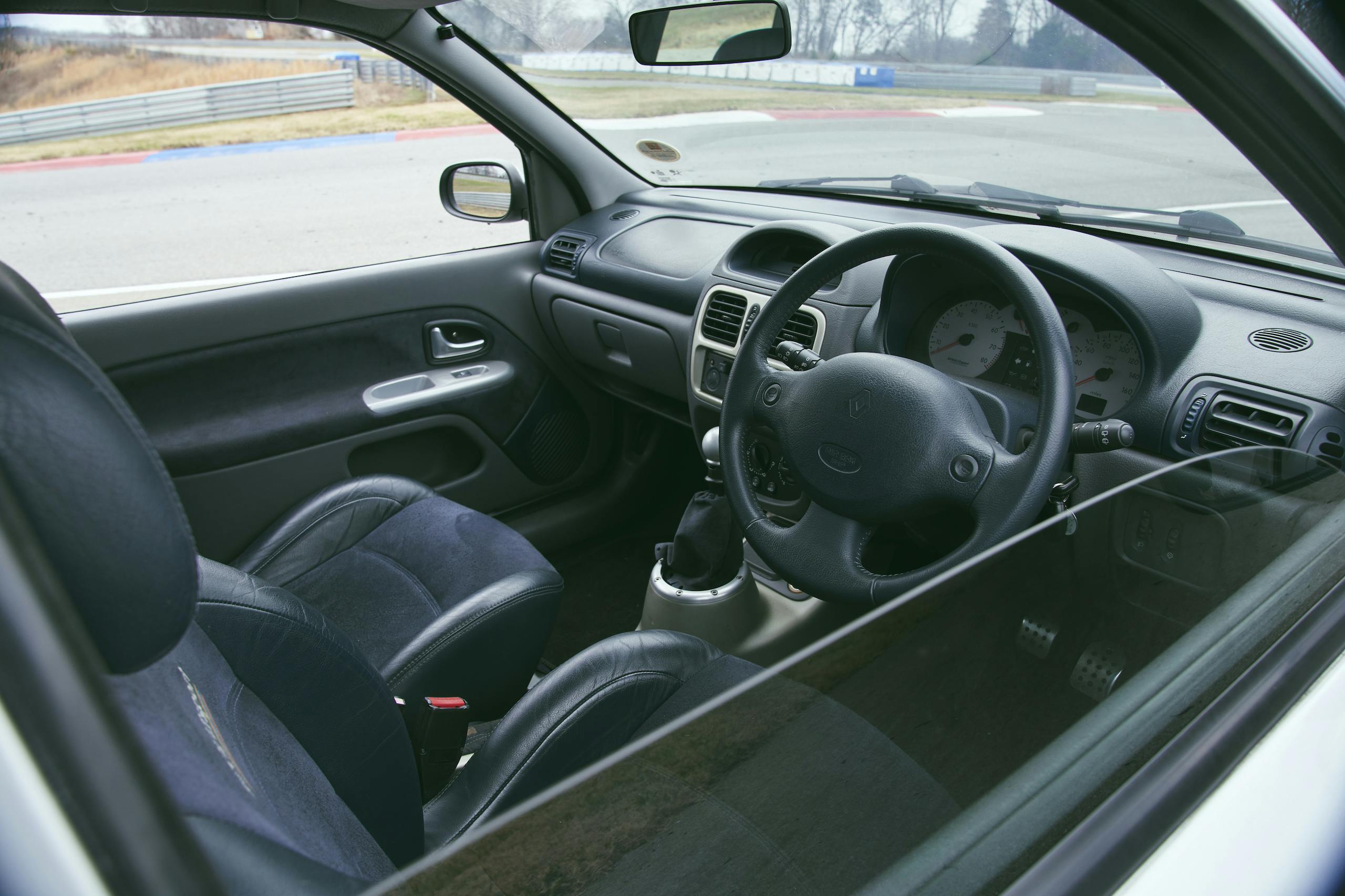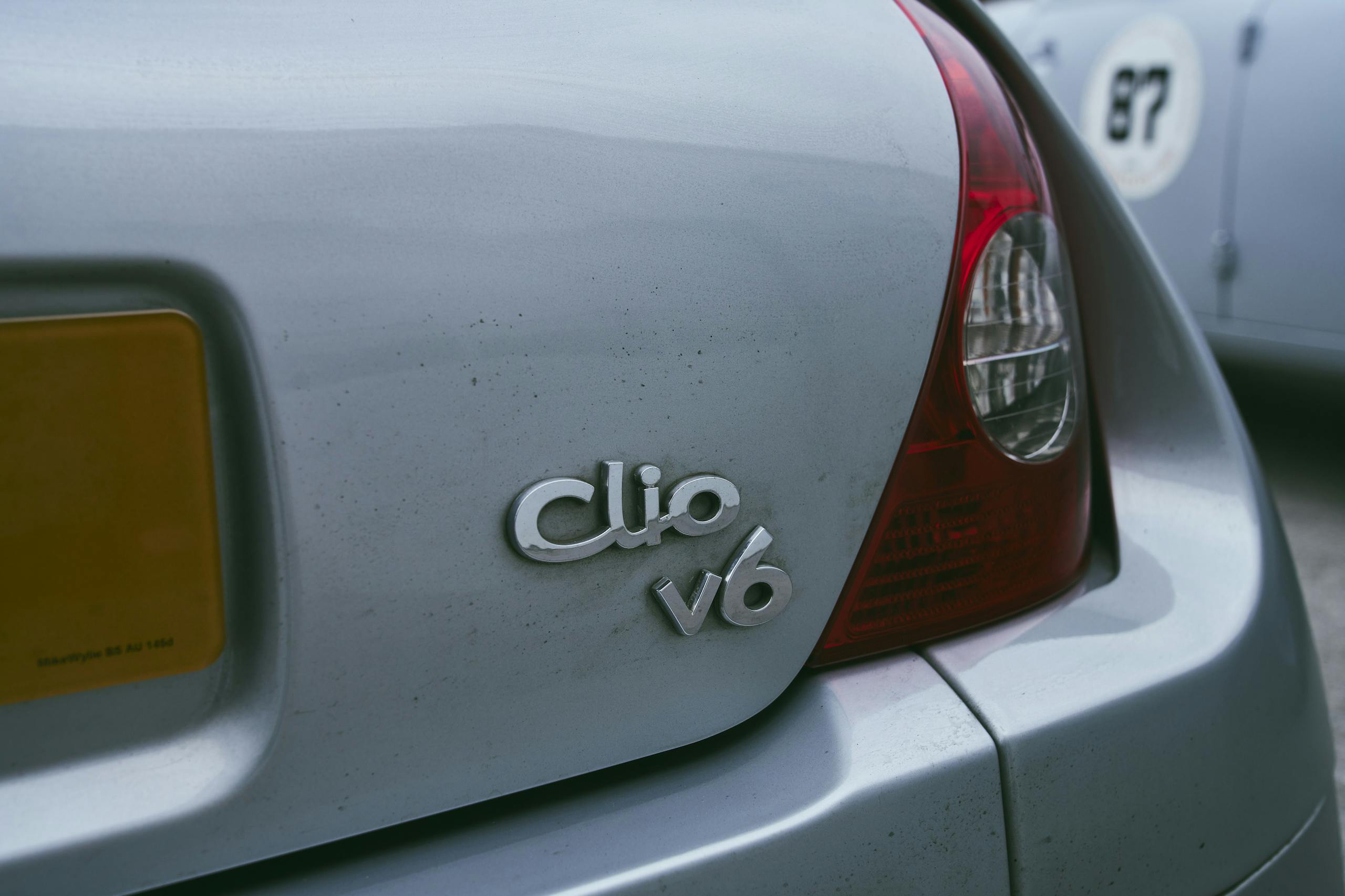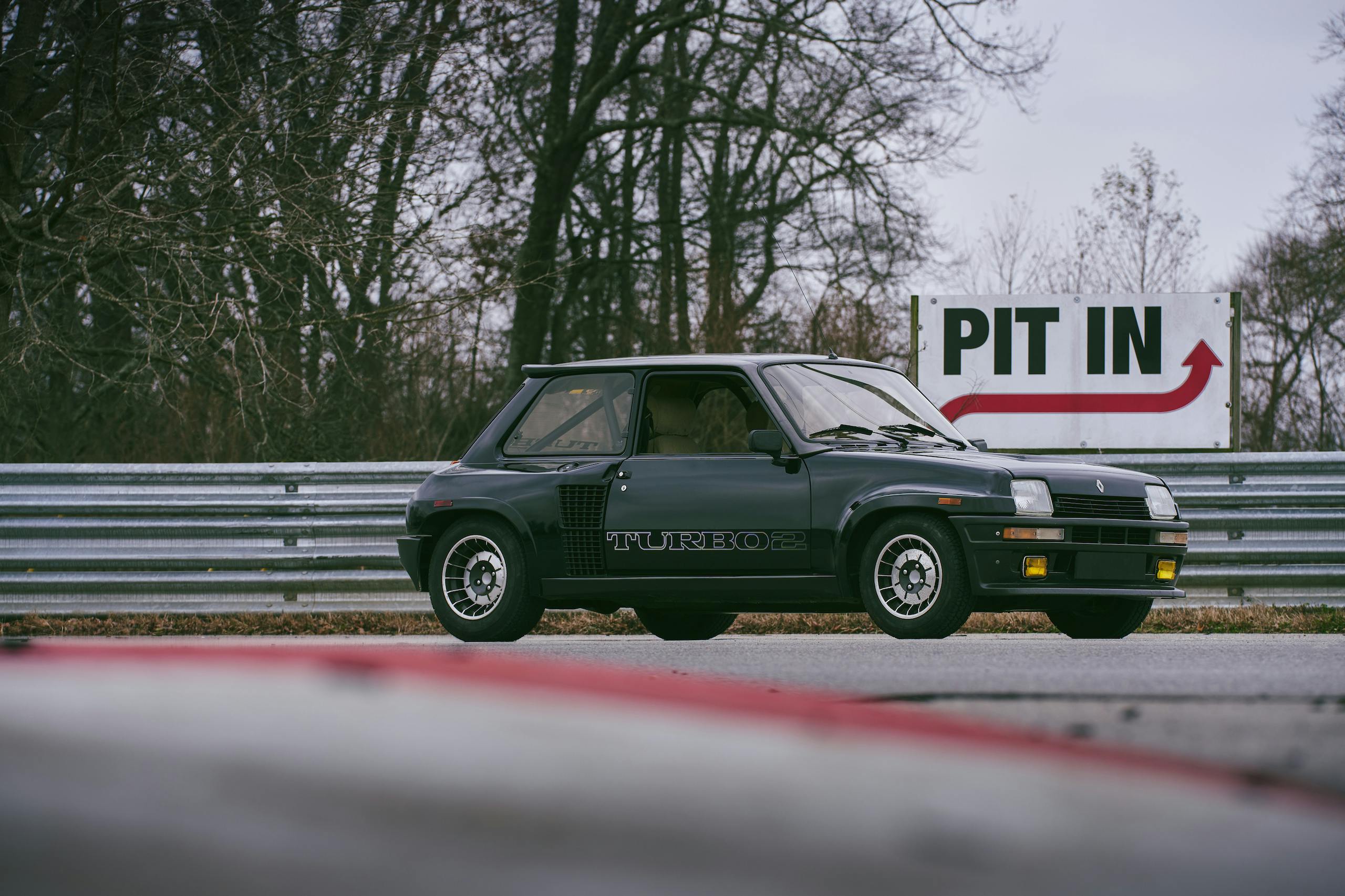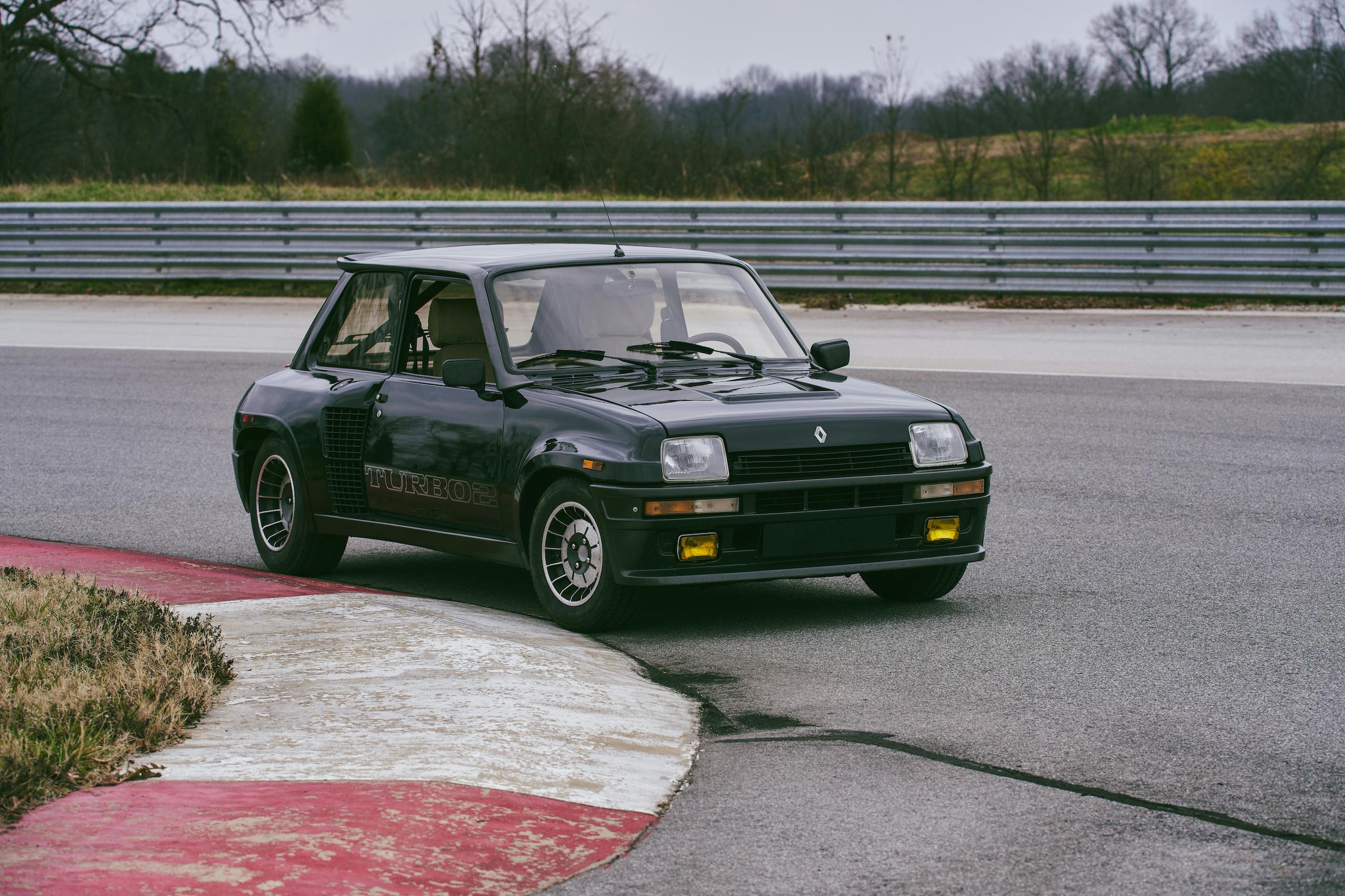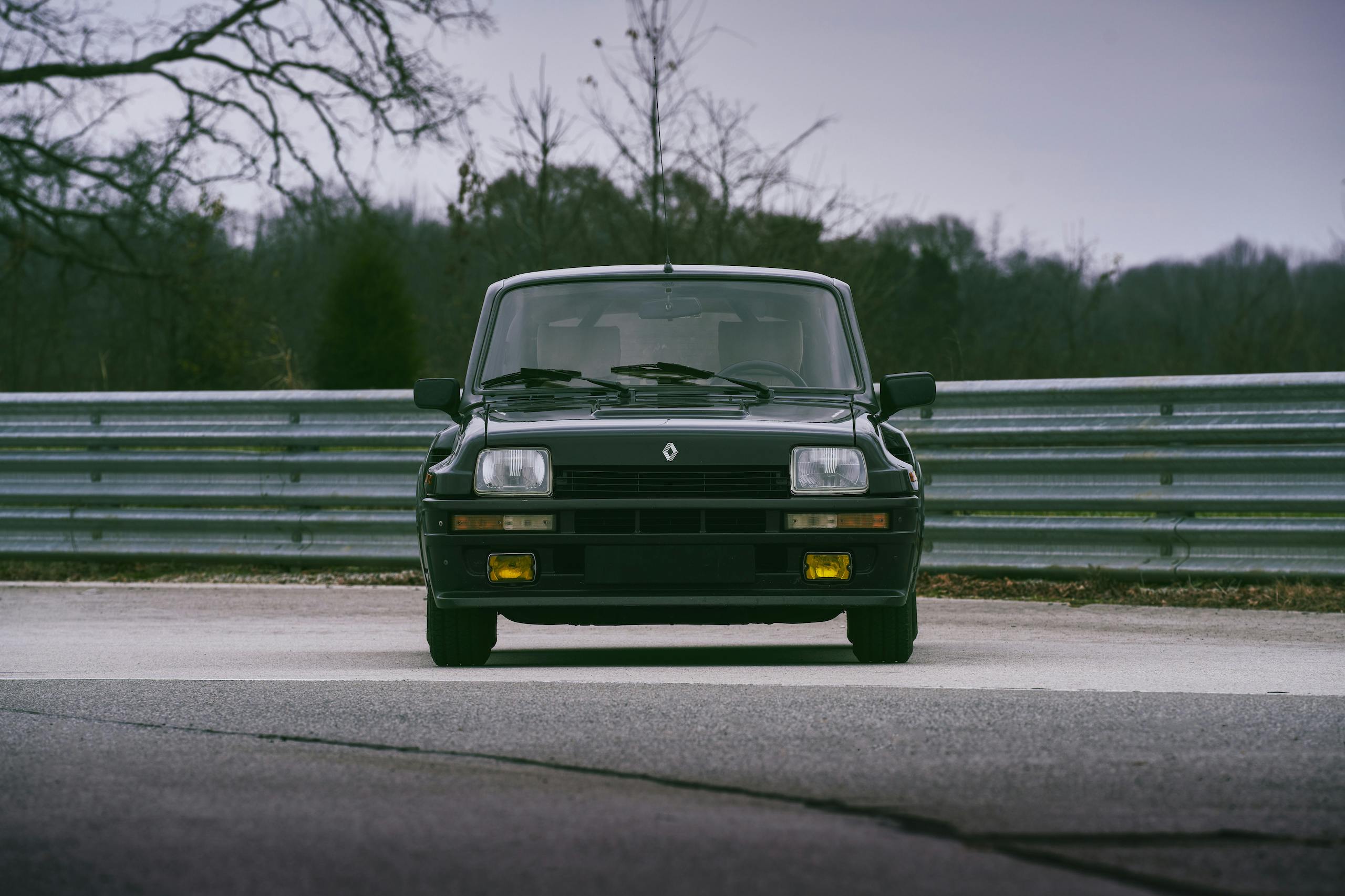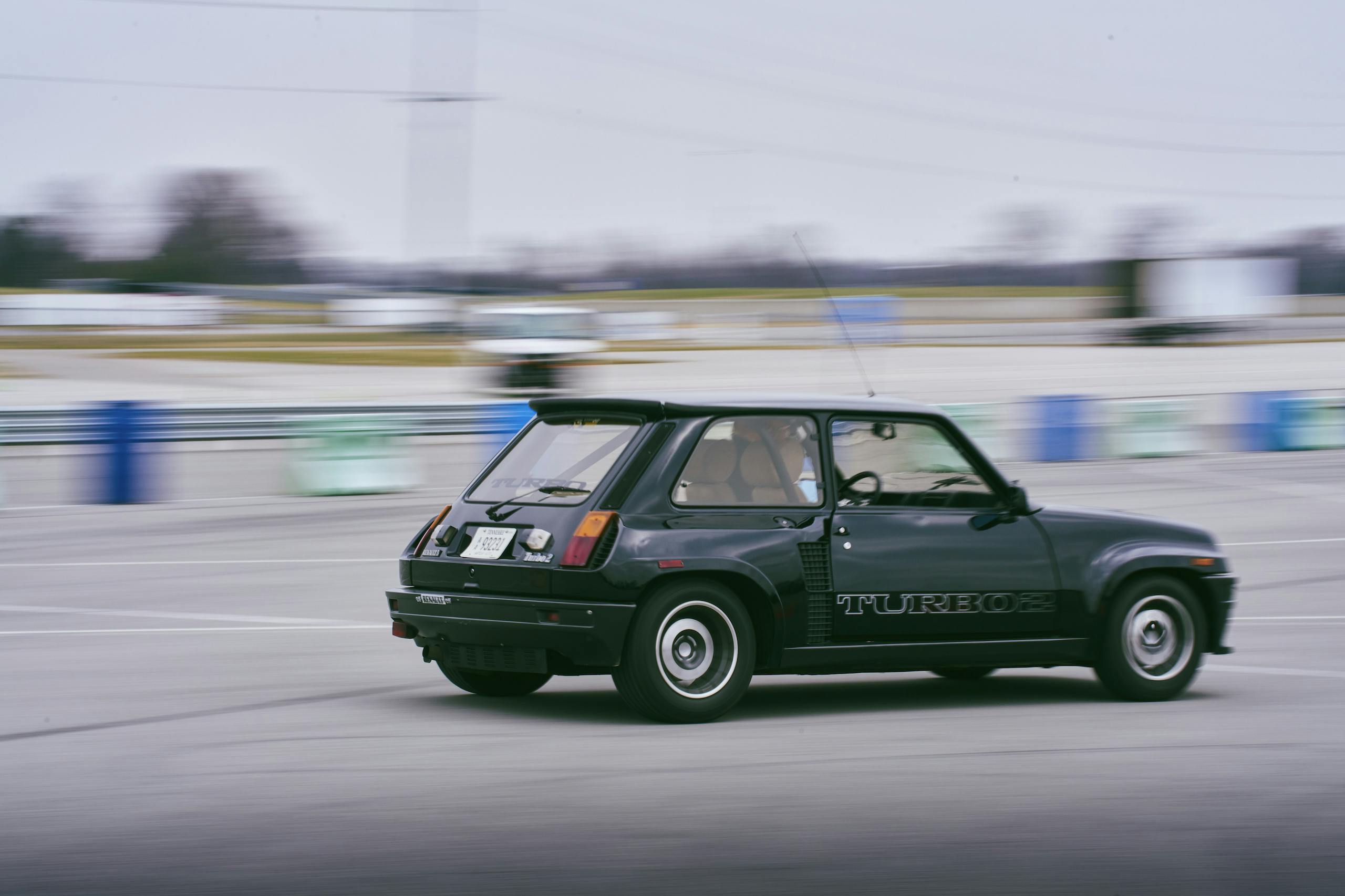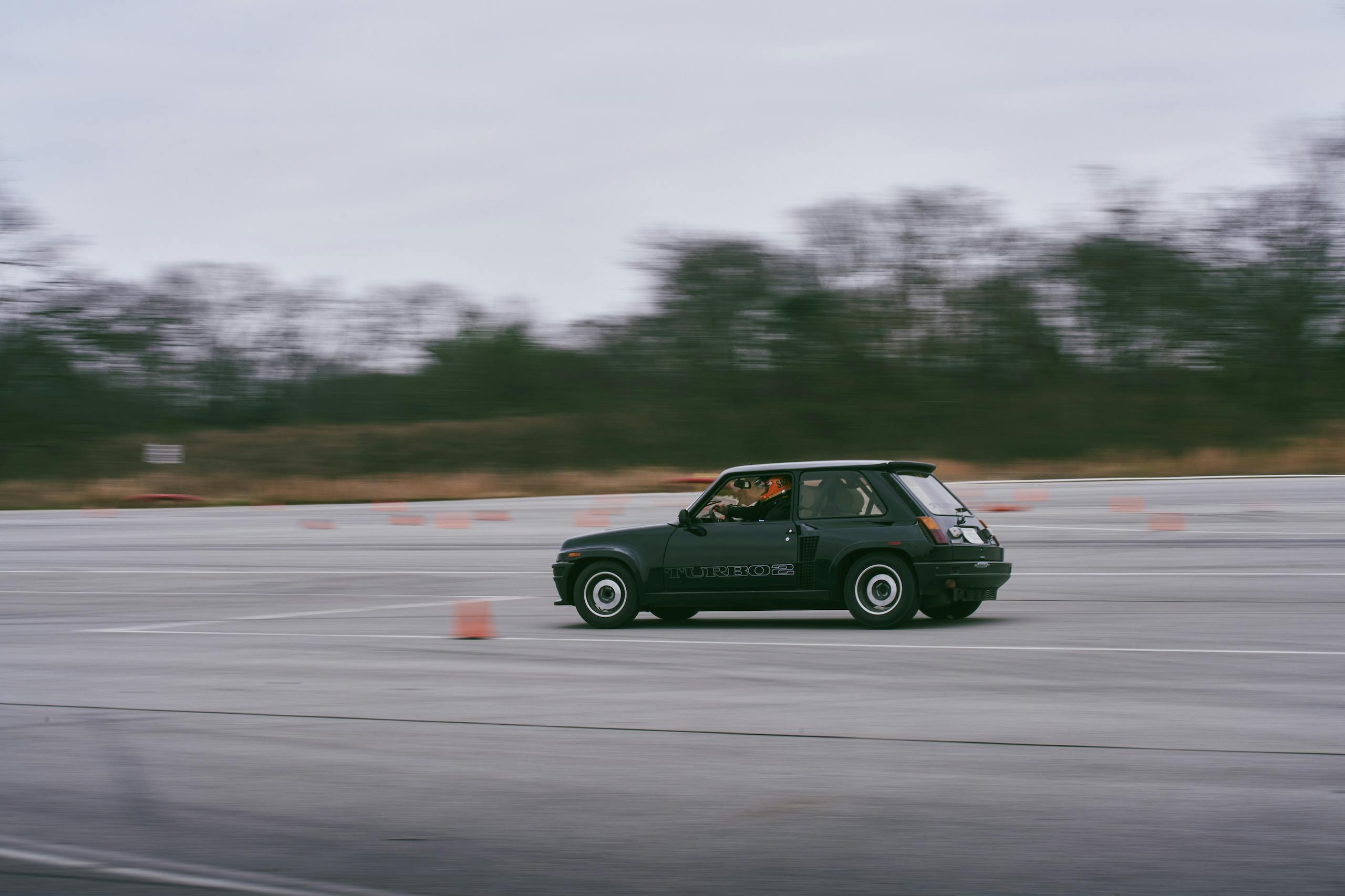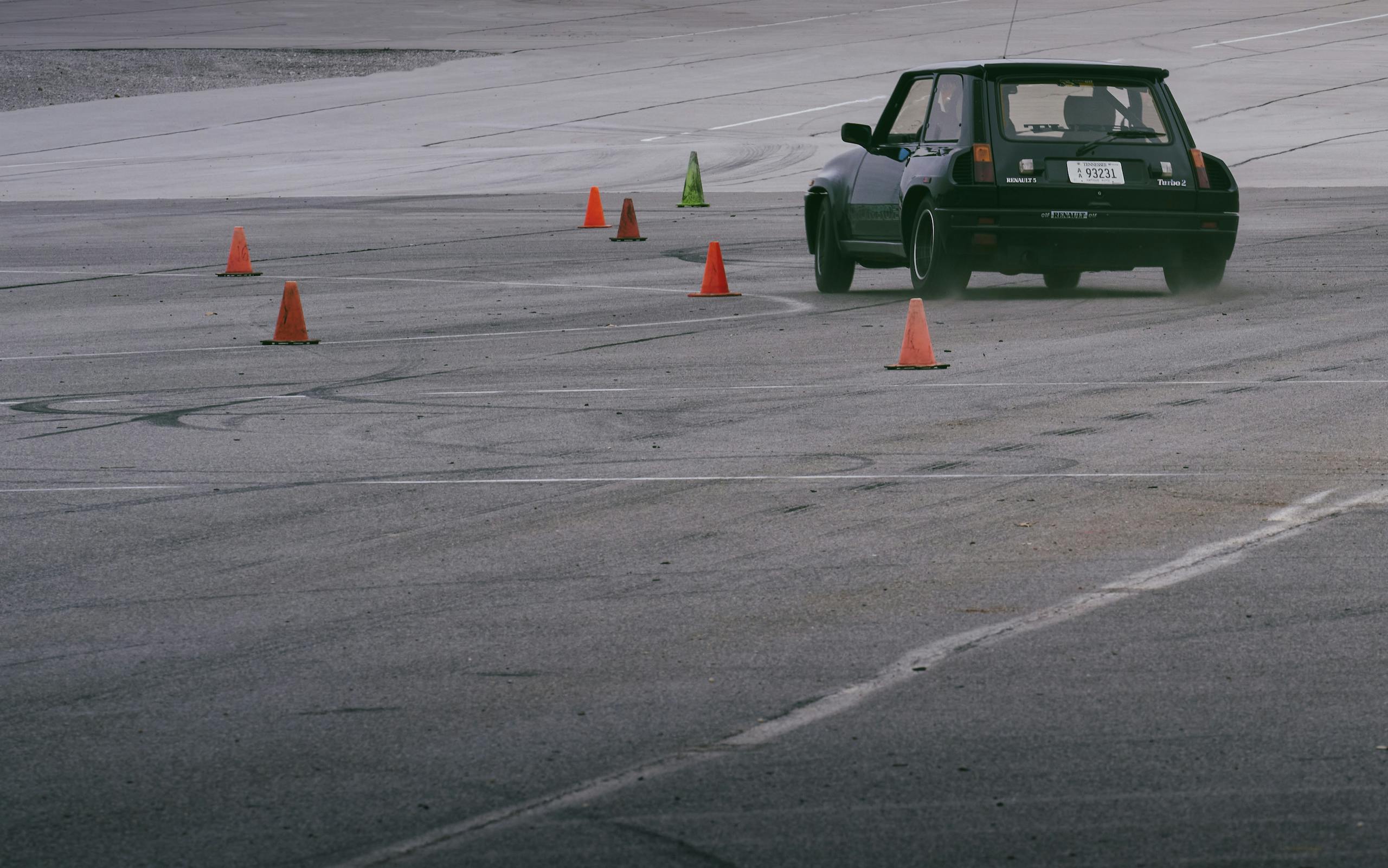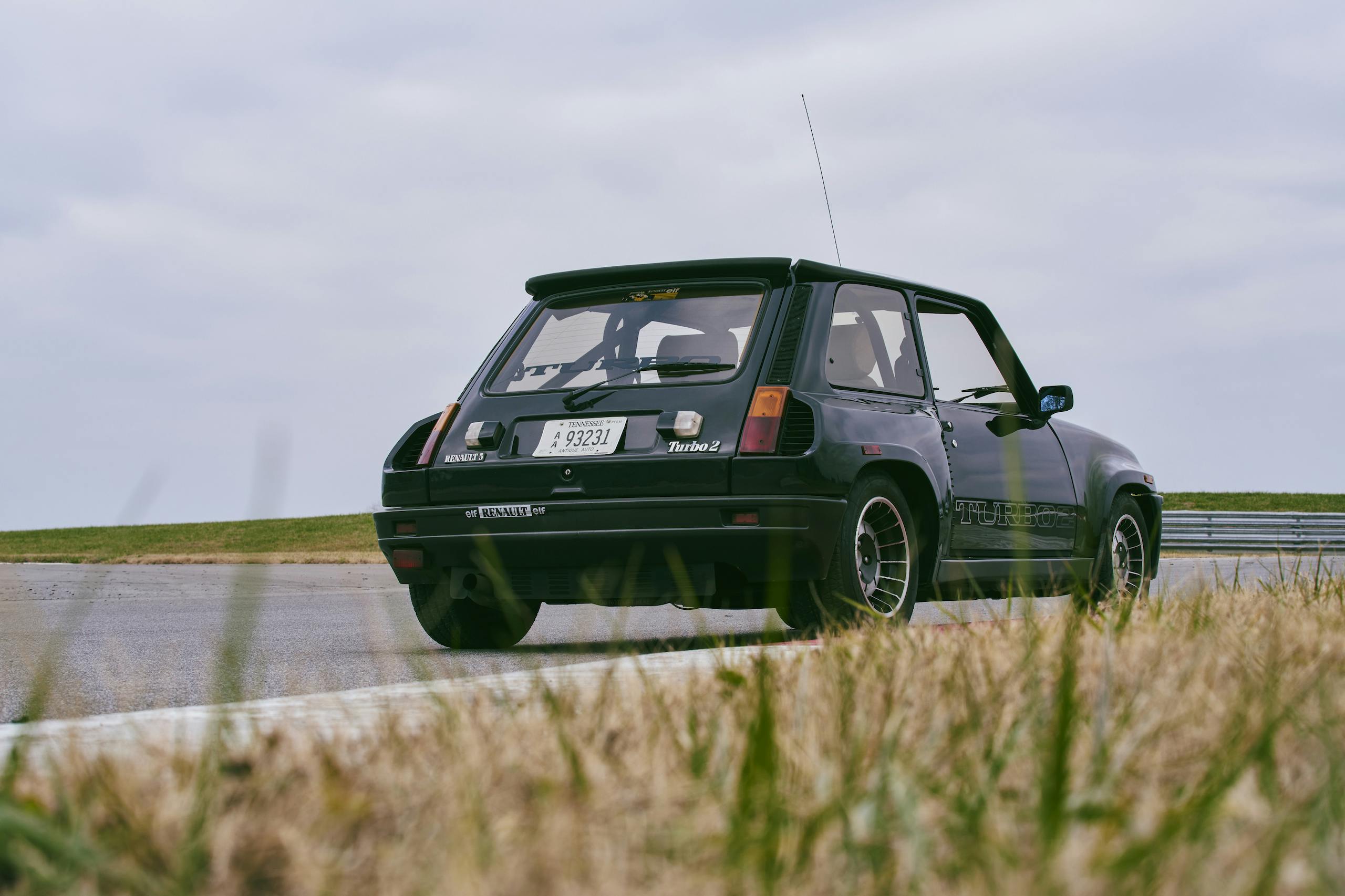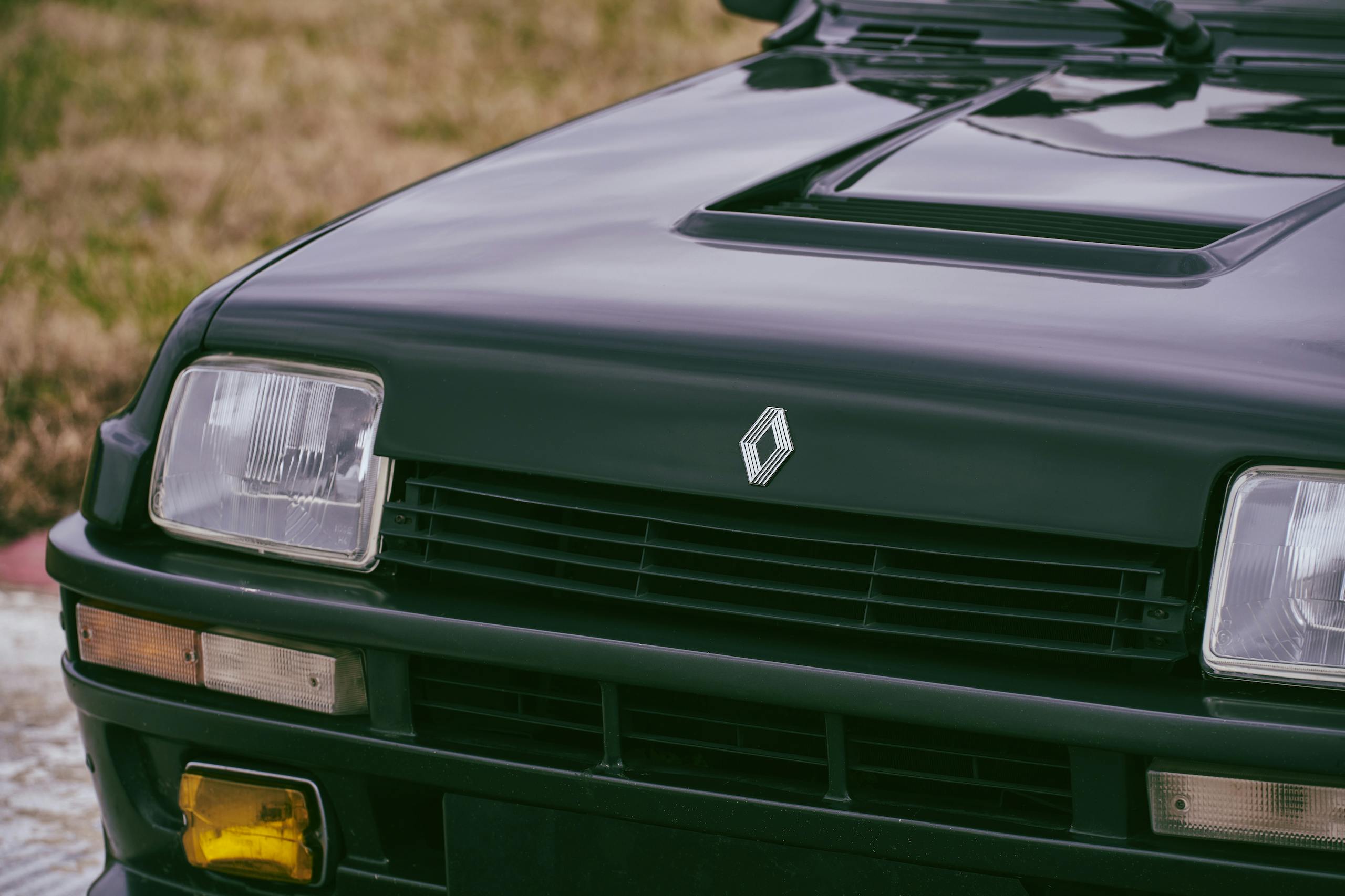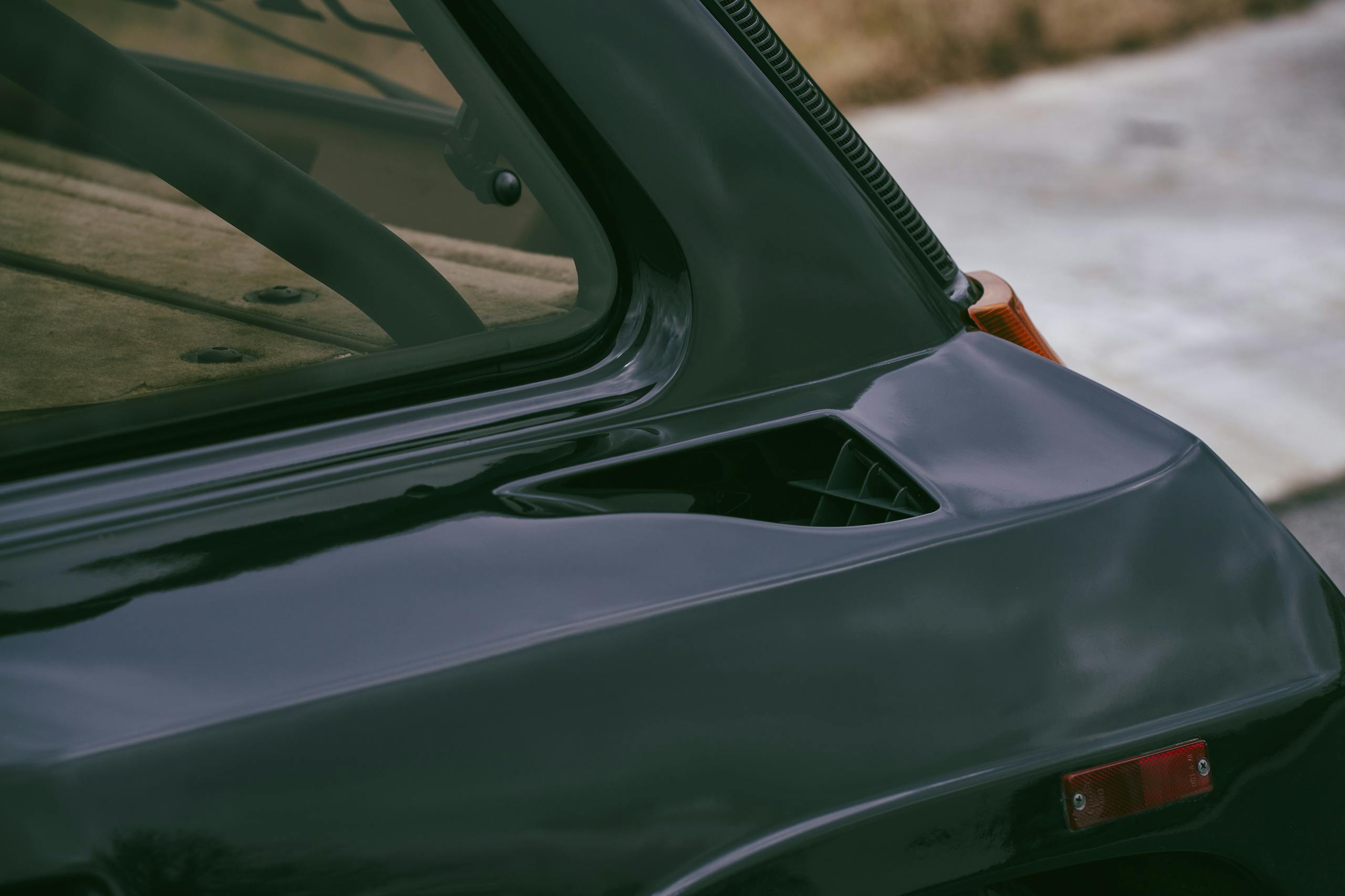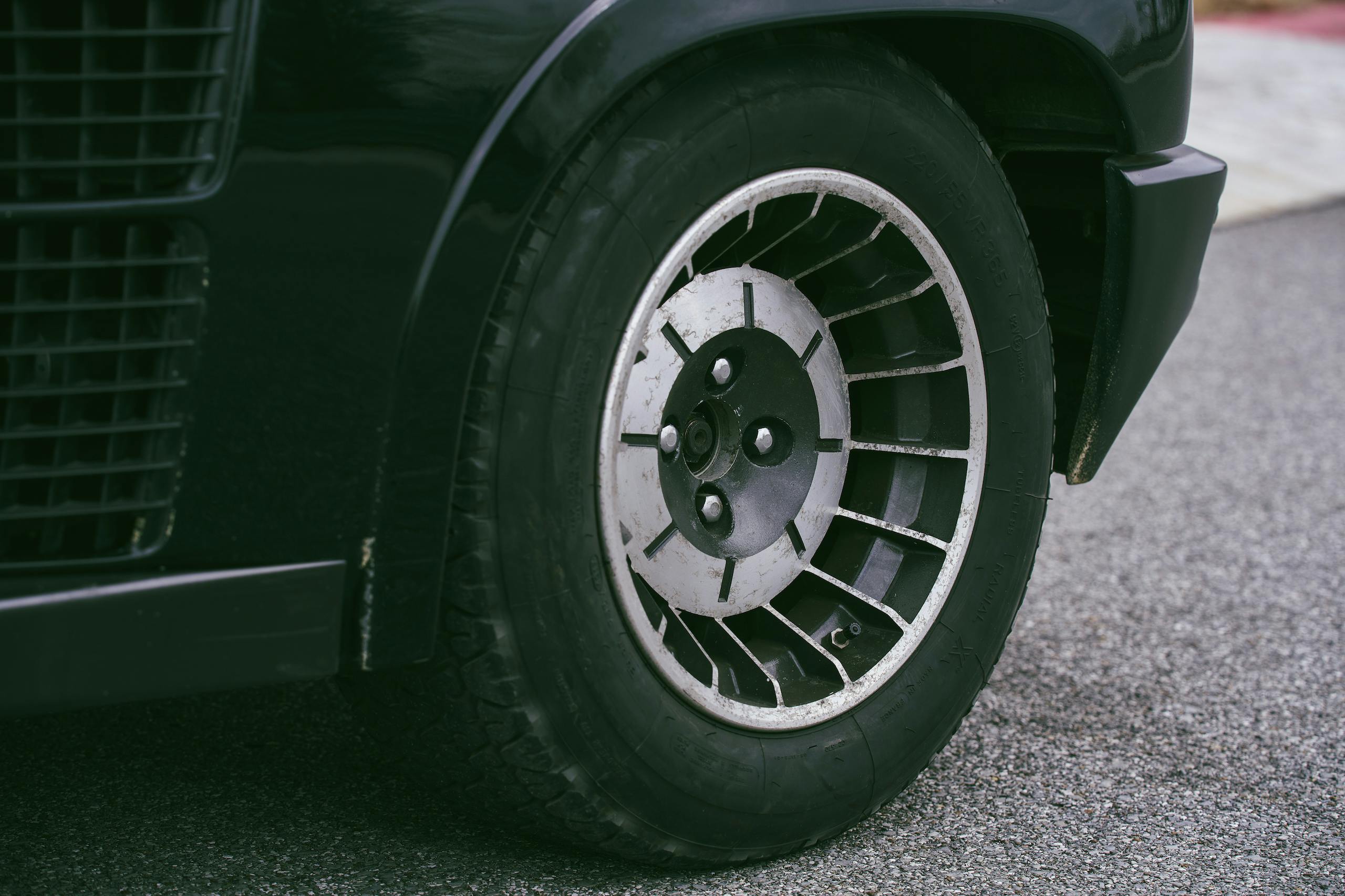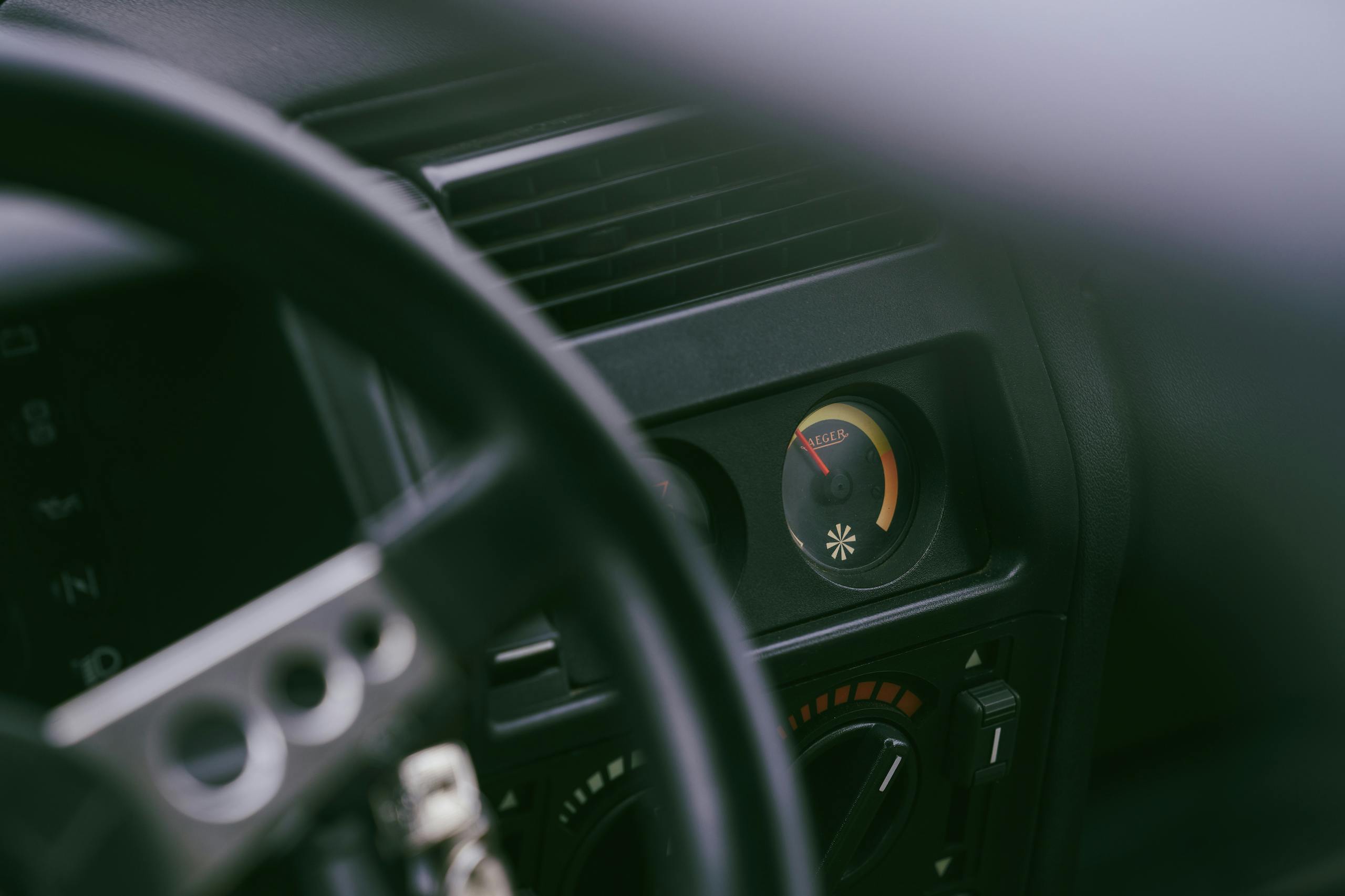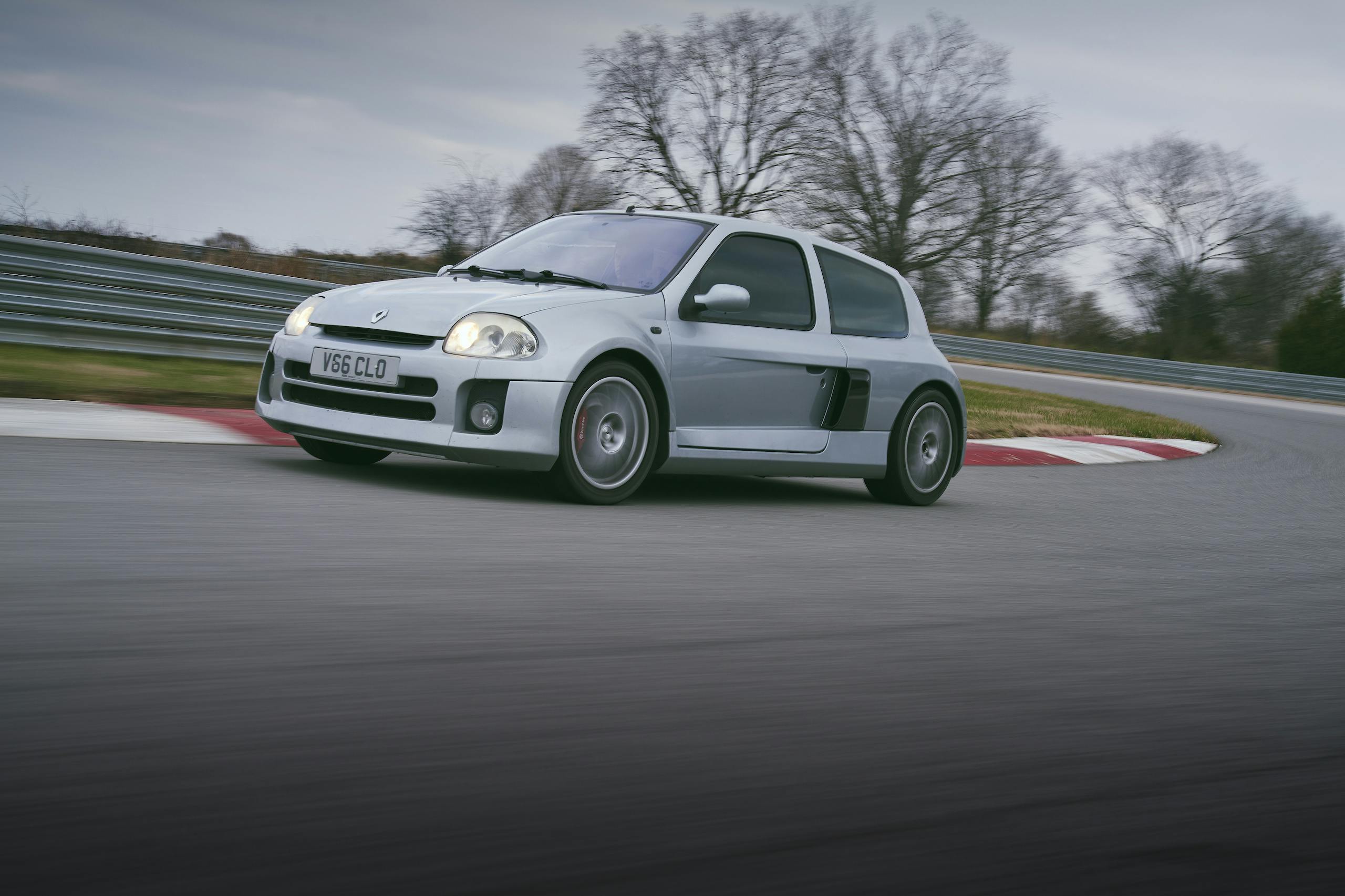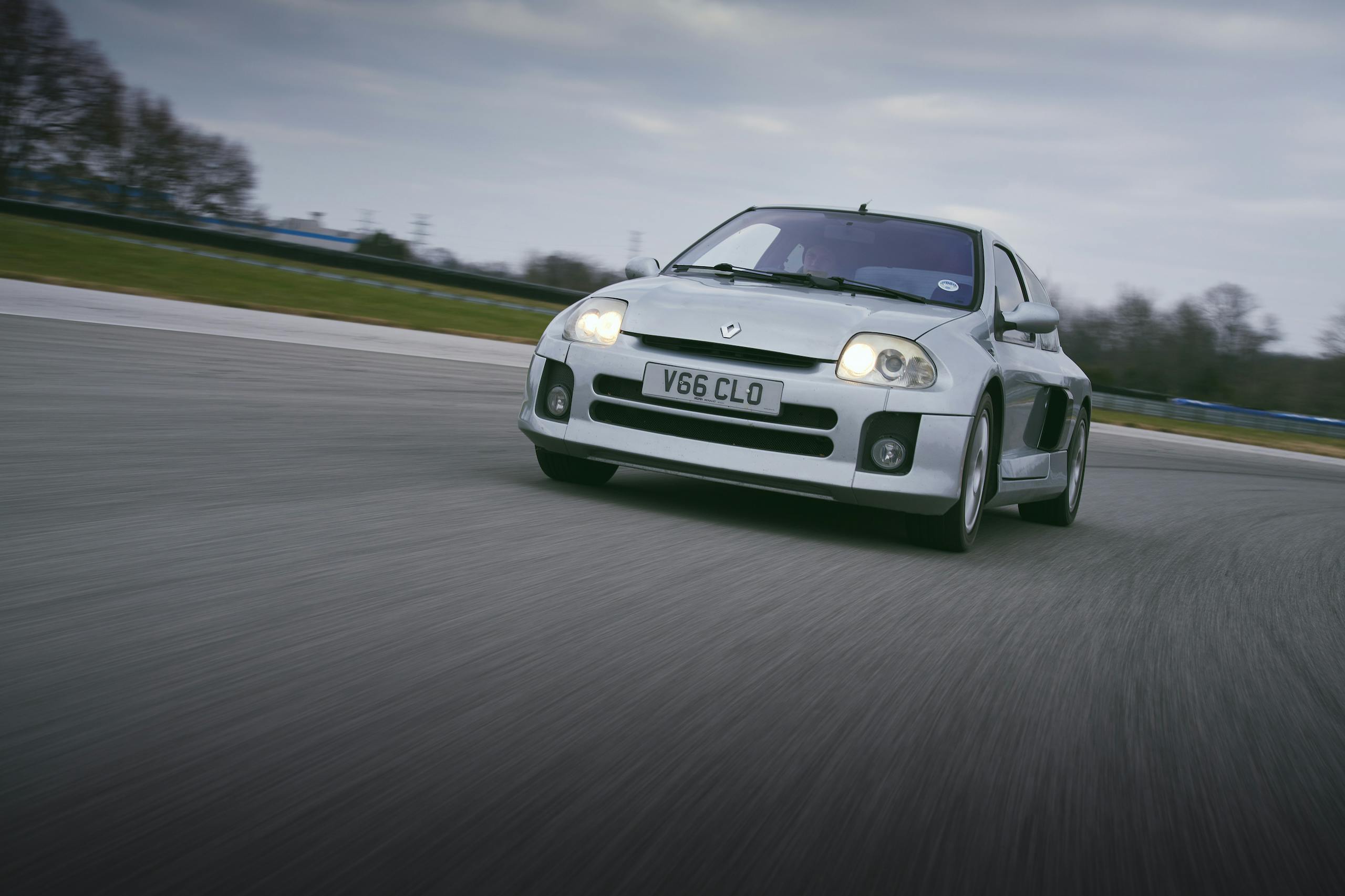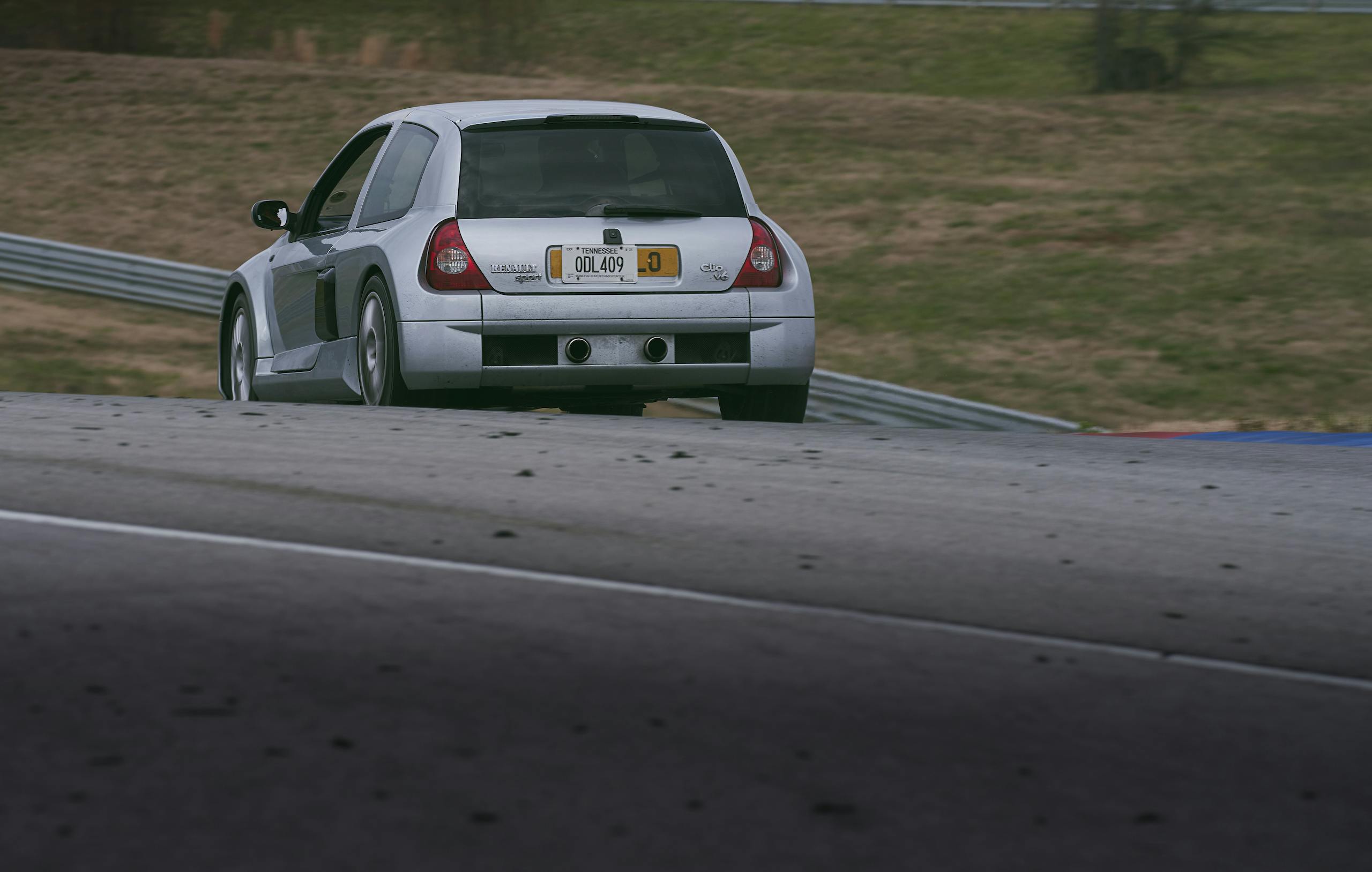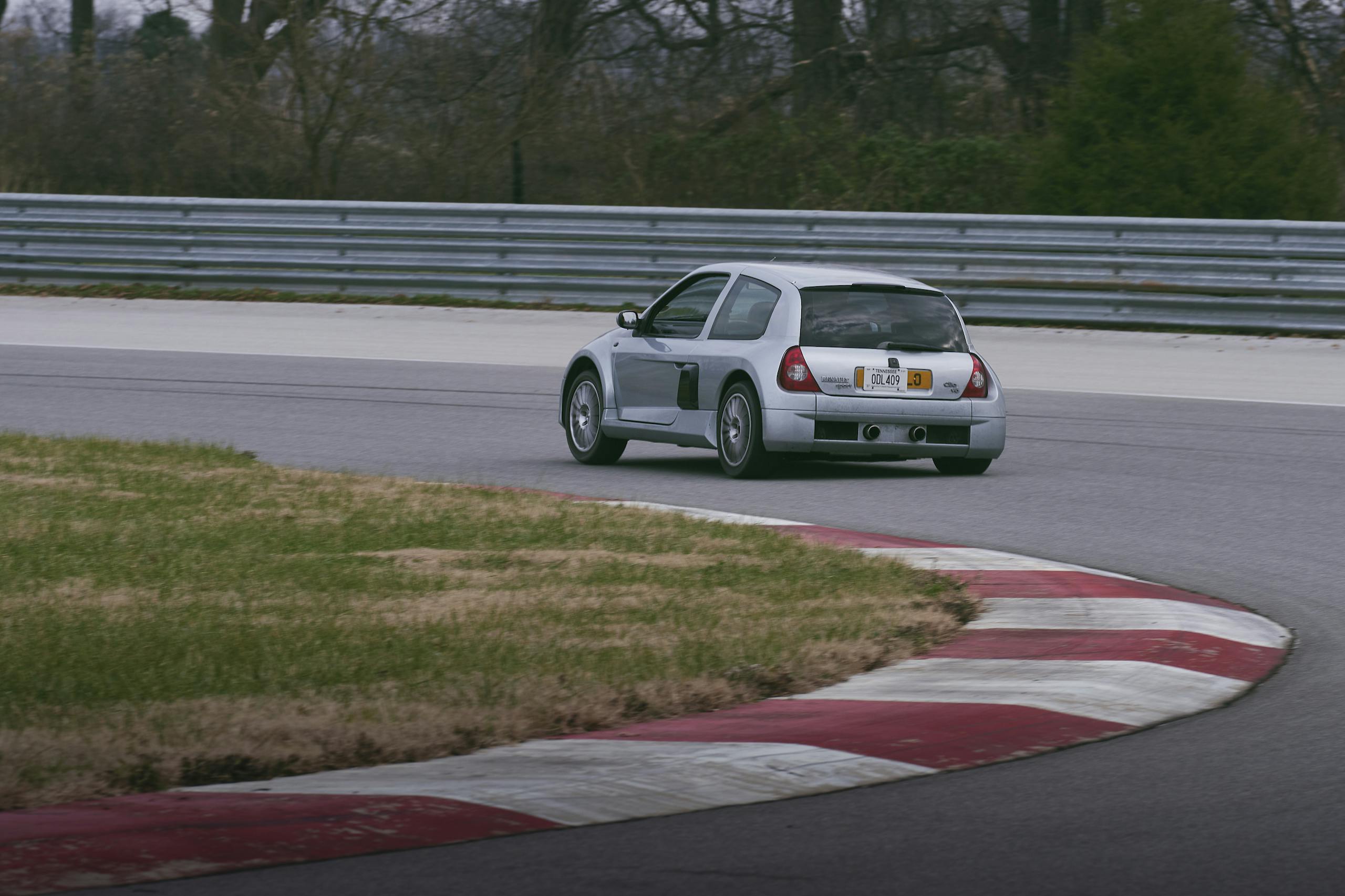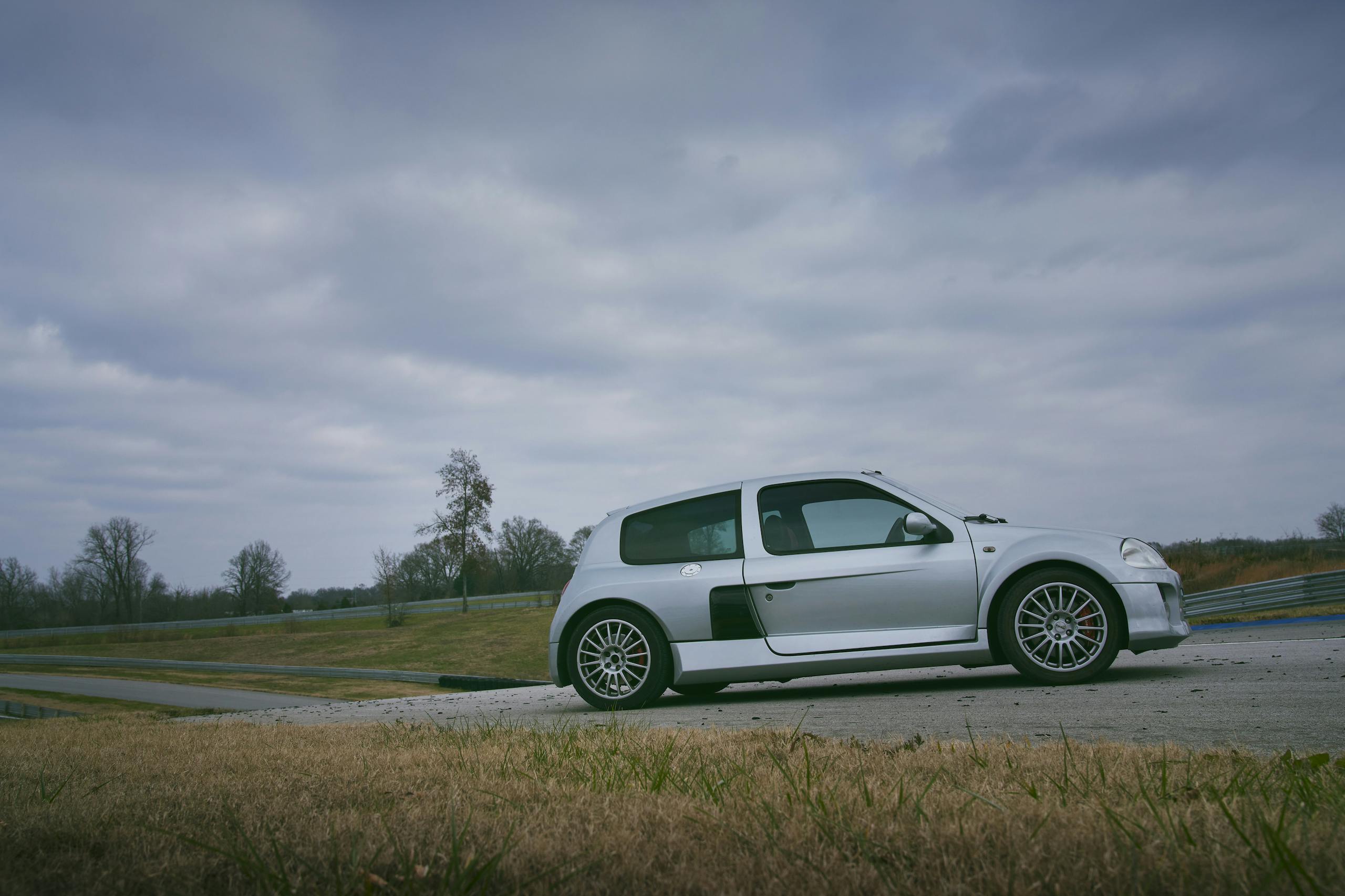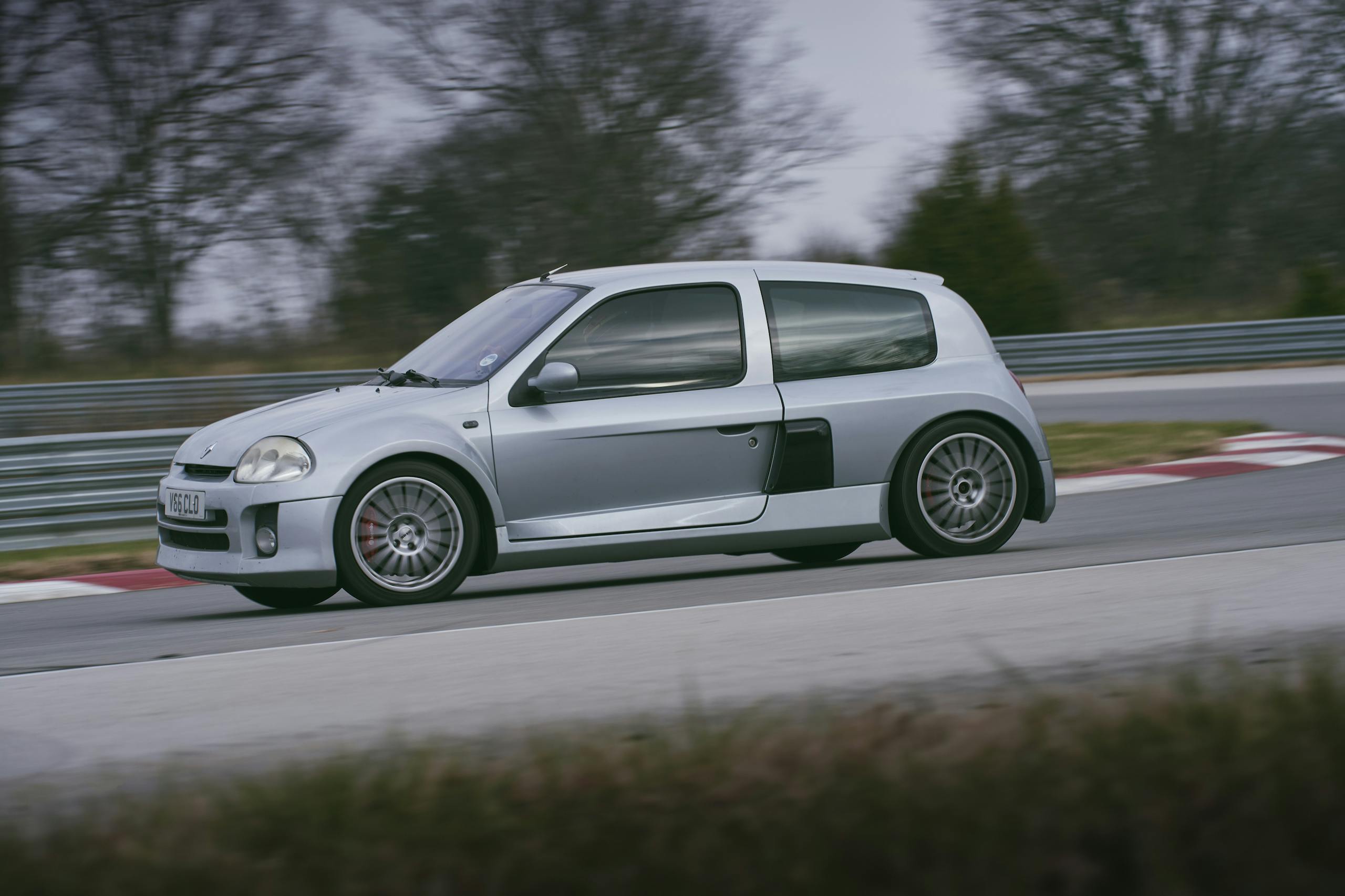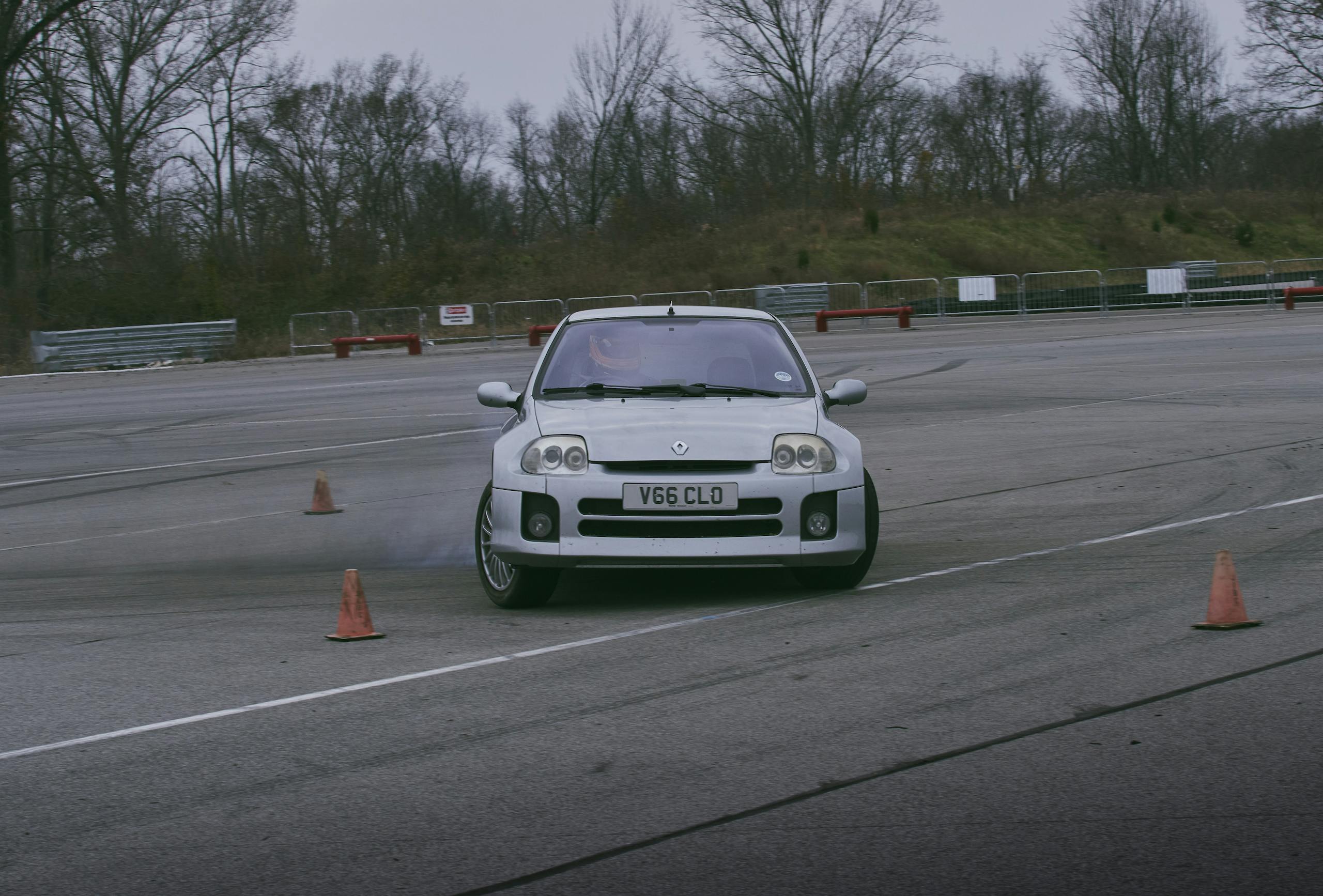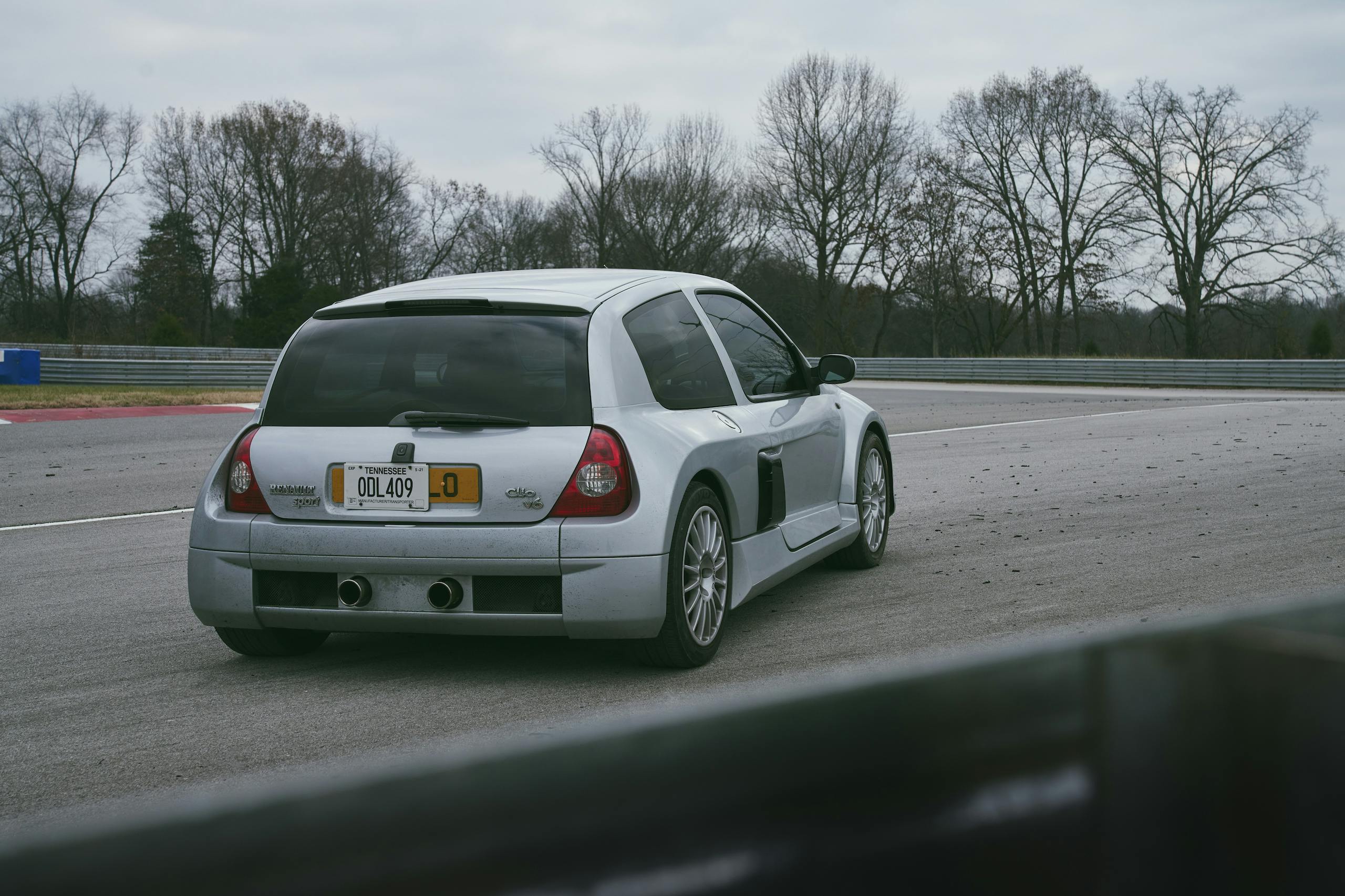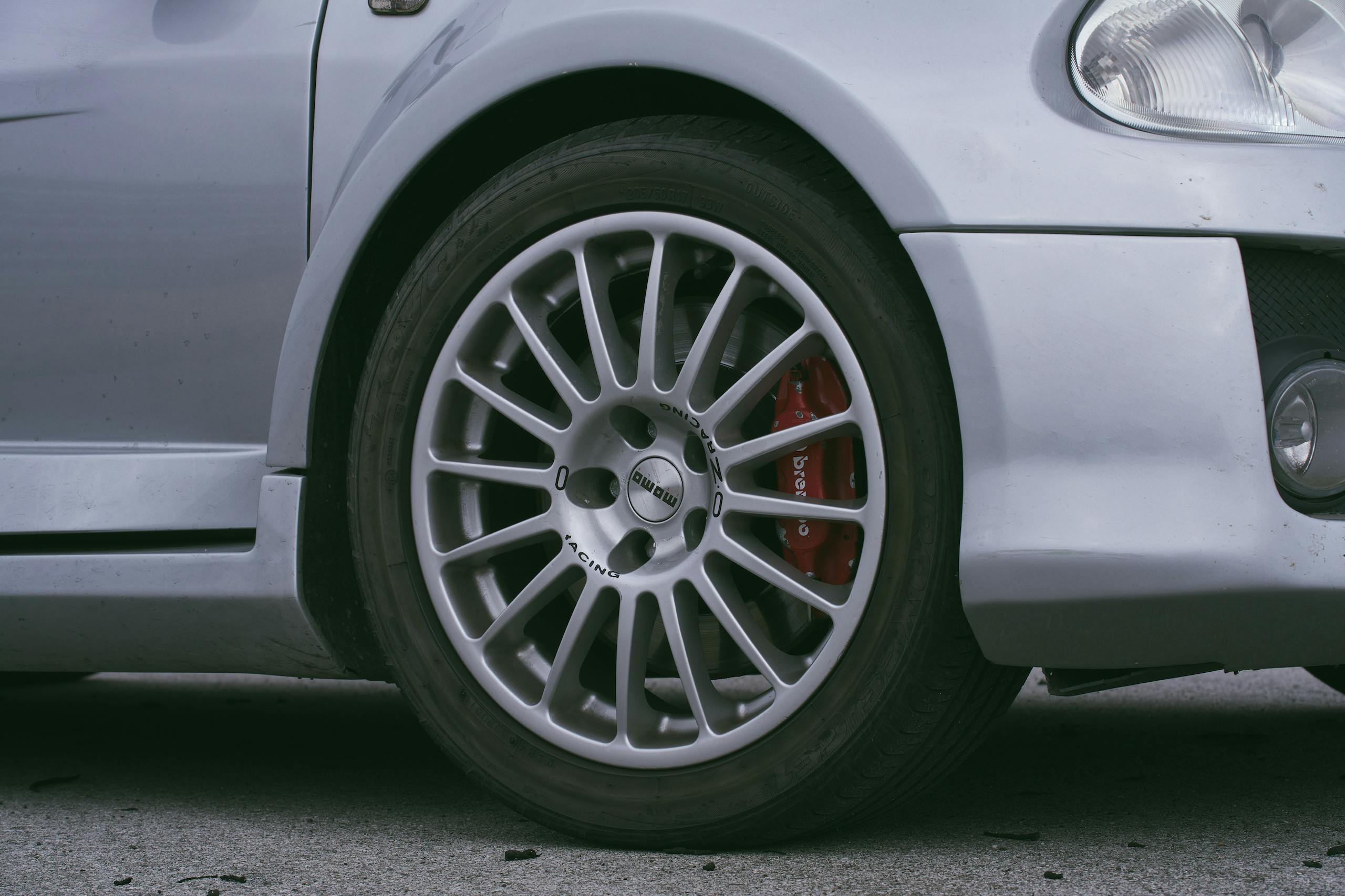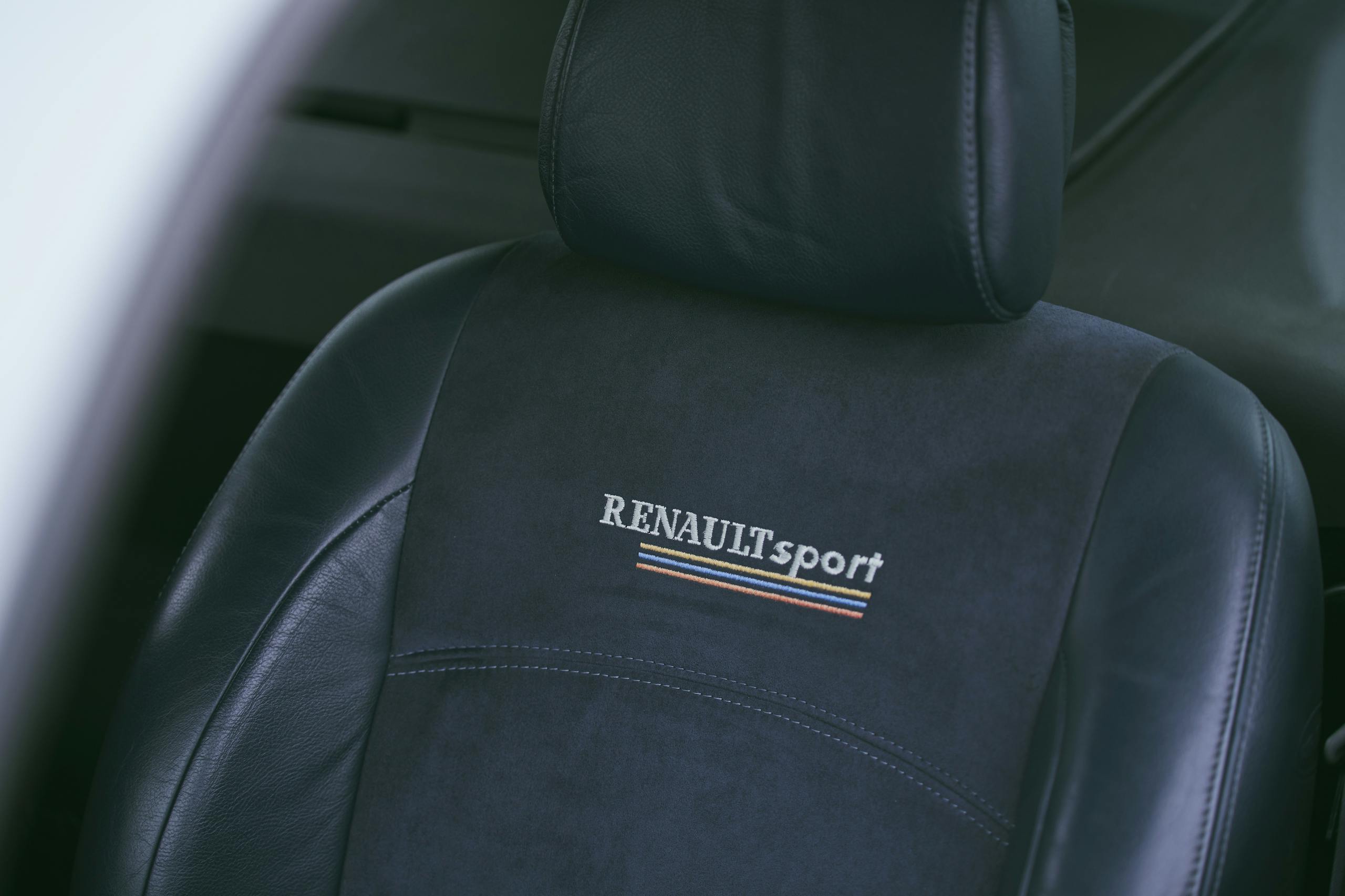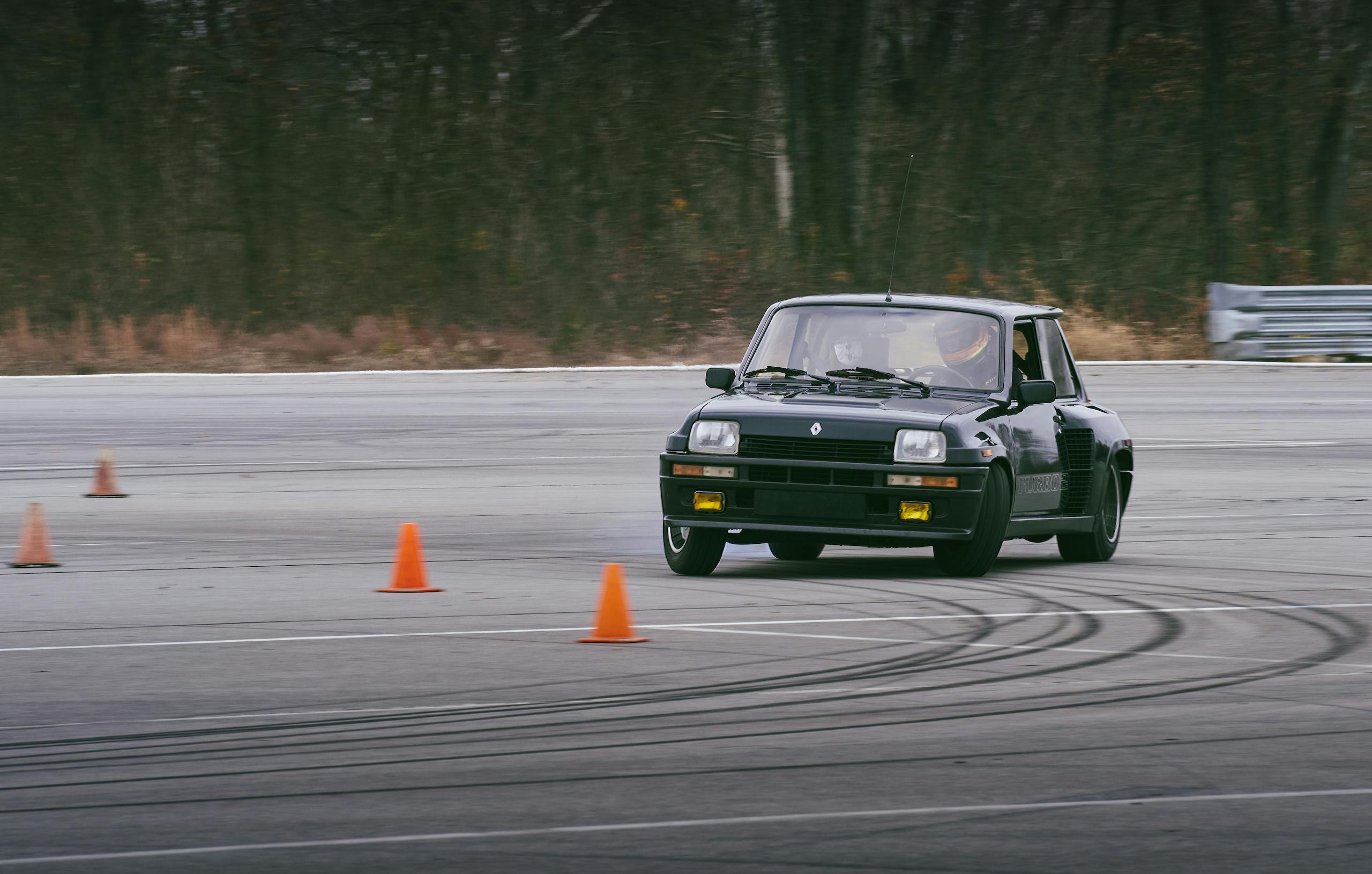Media | Articles
The Death Eaters, Chapter 3: Renault R5 Turbo and Clio V6
Welcome to a series we call The Death Eaters. With the help of the Lane Motor Museum and Kentucky’s wonderful NCM Motorsports Park, Hagerty is exploring the stories and real-world behavior of legendary cars with infamous handling. The stuff of lore, both common and obscure, from turbo Porsches to Reliant three-wheelers. This is the third in a series; the first, on the Tatra T87, can be found here, and the second, on a Reliant, is here. Enjoy! —Ed.
If you take one thing from this story, make it this: The French are bonkers.
For the latest installment in Hagerty’s Death Eaters, we’re looking at two Gallic landmarks: The 1983–1986 Renault R5 Turbo 2, and the 2001–2003 Renault Clio V6. Each was an expensive and limited-production car, and neither was officially sold here. Thanks to the kind folks at Nashville’s Lane Motor Museum and Kentucky’s NCM Motorsports Park, however, we were able to borrow a little seat time. At NCM, we ran a series of skidpad handling tests designed to illuminate two potent machines long known for making folks brown their pants.
Both of these cars are mid-engine hatchbacks. They look like mutant hot rods because they are, front-drive econoboxes gone mad, bodywork inflated to hold all the crazy. The R5 Turbo 1 and Turbo 2 took Renault’s front-drive, front-engine, 50-hp 5, a model sold in America as Le Car, and gave it a turbocharged, intercooled, 1.4-liter driving the rear wheels via years of lag and 160 hp. The fat box flares were styled by Marcello Gandini, he of the Lamborghini Miura. They held redesigned suspension and beefier brakes. The whole project existed as homologation project for FIA Group B rally work, where it performed respectably until the arrival of the world-beating Audi Quattro.
The Clio V6 was essentially the same idea. In the late 1990s, Renault wanted to nudge sales of its 100-hp Clio supermini, so the company drummed up a one-make racing series and built a mid-engine, V-6-powered Clio to fill it. The roadgoing version of that car—French pourquoi pas? logic incarnate—was developed and built by Renault Formula 1 partner Tom Walkinshaw Racing. The stretched and widened Clio that resulted was clearly hammered out by a race team, complete with 42-foot turning circle, a 2.2-cubic-foot trunk, 227 hp, and a mere 12 months of R&D. Unlike the R5, the Clio was a porker—660 pounds over its base sibling—and widely derided as a Jekyll-Hyde mess. Two years into production, Renault yanked the car back in-house, addressing many of the model’s problems with a face-lift and engineering rework called Clio V6 Phase 2.
Marketplace
Buy and sell classics with confidence
In the right hands, each of these little nutjobs could outrun period supercars. They were also known for leaving the road sudden as a heart attack. When the R5 Turbo was new, Road & Track politely allowed as how the car required “delicacy,” its throttle “very much a part of the handling equation.” At the Clio’s launch, Automobile said the Phase I offered “chilling lift-throttle oversteer, wilting brakes, and a nasty case of straight-line instability.” Evo called that car one of the scariest-handling machines of all time and advised buying one only if you didn’t intend to drive it.
Myths and truths can take on a life of their own. Most cars don’t live up to period hype after the fact, but then, these aren’t most cars. For better or worse, machines this nuts don’t come along often. Strap in.
***

1985 Renault R5 Turbo 2
A little song, a little dance, a little seltzer down your pants.
I owned a Le Car once. It was a fun little dork, bought half as a joke, shortly after I took a job at Road & Track in 2012. The car was dirt cheap and somehow felt even cheaper, but it also exuded a kind of egalitarian goofishness. The R5 carries the feeling. A Turbo 2 is ten inches shorter than a Mazda Miata but a few inches longer in wheelbase. The upright doors and narrow cabin make the driver’s seat feel like sitting in a 50-gallon drum, as if you could simply stand up and walk around, wearing the car like a full-body hat.
I didn’t really fit my Le Car, and I didn’t fit the Turbo 2. Probably because I’m not four feet tall and French. The thin wheel is fixed close to the dash at awkward forward tilt, inches from a 150-mph speedometer. The hard-plastic switchgear seems like an afterthought, but the rest of the car is quiet and rattle-free. Even the shift linkage feels bulletproof. Ride quality is remarkable—a French-car trademark—and the suspension marries long travel with relatively cushy damping and big grip.

Every great once in a while in this strange and delightful job, you expect to find a wheeled object creepy and instead come away wanting to take it home forever. If the R5 were an organ, it would be the heart of a hummingbird. If it were a child, it would be one of those five-year-olds who runs laps of the living room at max q and tries to light your couch on fire. If cars have souls, this one holds nothing but what the Irish call “fook.” Driving it near the limit makes you glad to be alive, and also very tired, and when you climb out, you’re out of breath and, well, I was for a moment very happy about everything in life and just wanted to lie down.
Surprises are a perk of this job. Cars this mad are supposed to be… mad, you know? Treated sedately, the R5 suggests carts and karts—golf, shifter, shopping. Nothing serious. At 75 mph, it will track hands-off straight. The steering is so quick and light at speed that you catch slides with little wrist dabs, not entirely unsurprised. Then you figure it out. The tub seems to flit and caster from just above the pavement, growling lightly from behind and muttering the odd forced-induction zhoosh. Below 4000 rpm, matting the throttle means around three seconds of waiting through turbo lag. Higher rpm reduces lag roughly by half. The torque hit on boost is not huge by modern standards, but the car rarely feels less than manic. It just sort of rubber-bands its way down the road, snarfing up pavement in lungy little chomps.

The sum makes you obsess over space. The R5 grows in size as you learn its habits, always physically tiny but also perpetually tracing a path that widens in proportion to your own input slop. You eventually come to obsess over the seemingly impossible elimination of that slop, loathing every microscopic screw-up, because the penalty is sliding front tires or simply just those taillights sashaying too much when all you really want is forward motion. The center console holds a boost gauge, far below the dash. This location makes any information on that gauge south of useless. The only place you really want to know the R5’s boost is in a corner, and if you are looking at the center stack in an R5, that means you are not looking at the road, and that means that you are probably about to die.
Few cars have so many needles in immediate need of threading.

Sure, people crashed these. You can almost smell it. It was not the car’s fault, more the blame of anyone who climbed into this framework, this half-pint spazgoblin, expecting to be handed anything short of a weapon minus safeties. In stock form, on appropriate tires (our test car wore Michelin TRX reproductions, a copy of the Turbo 2’s 1980s factory rubber), there is no evil here, just distilled, jittery honesty—no front tire if you’re brainless (too much throttle at the wrong time, or mistiming the boost, which isn’t always consistent) and no rear tire if you’re smart (too much throttle at the right time, a gram too much trailed brake, a breathe off throttle before the car’s haunches have settled). The only time the R5 is ever short on anything you actually need is when you’re thinking too much or not enough.
Naturally, that’s the hard part. And for what it’s worth, all of the above seemed like small deal to me—competent in a race car, but no genius—until I imagined doing it at nine-tenths on a public road, or in the wet.
I could probably stick that landing for a bit, God willing, absent distraction. If somebody happened to turn on the radio in the middle of it, I would probably launch the whole party off a cliff.
When R5s were new, people tweaked them. Generally for more grip, to make the car “safer,” which usually meant more tire. More tire in a car like this often adds roll understeer and makes limit behavior more dicey, adding stability while causing the car to feel less alive. Rebalancing the suspension to compensate would inevitably mean adding stiffness, and then you’d lose the lovely stock feel, this middle ground between happy ride comfort and rabid road weasel.
Call me crazy, but I vote rideweasel.
Few cars have been so blatantly aimed at those who know exactly what they’re doing. Given a fab shop and a desire to calm things down, you could swap in a larger, less schizo motor, maybe add tire, truly dial the suspension to modern standards, stretch the wheelbase a smidge. But at that point, you’d basically have the Clio V6. And that, as they do not say in France, is a whole other kettle of le fish.
***
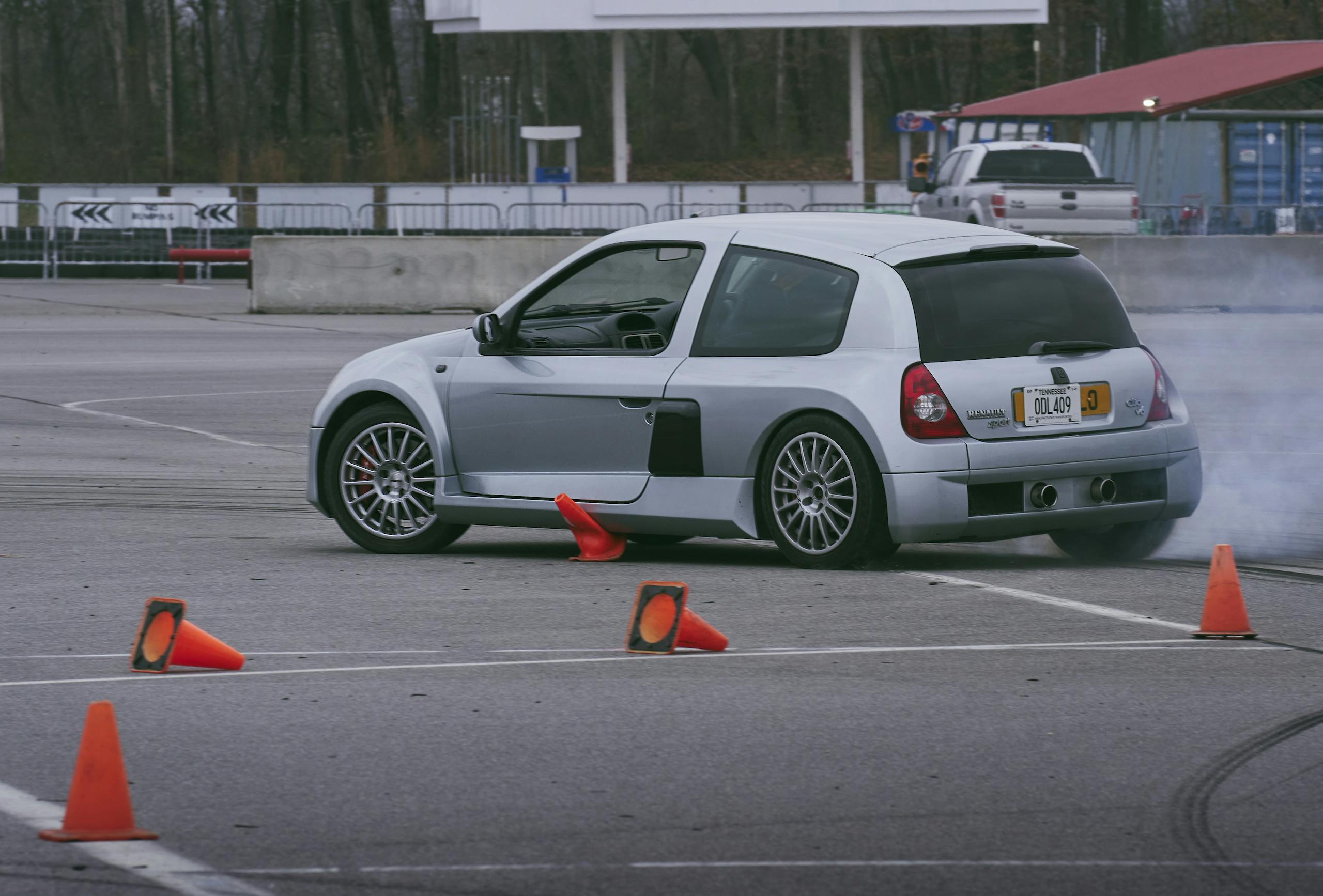
2002 Renault Clio V6 Phase 1
New clothes, old soul.
What a squat little gremlin. If you had to pick one of these cars for ordinary use, this would be it. The ergonomics are excuse-free, and you get the distinct impression that the Clio’s occupants would survive a minor traffic accident. The cockpit is assembled as to suggest its components will always work, even if they won’t. That warbly V-6 makes linear torque and a touch of rasp above 4000 rpm. In short, the Clio appears to have been designed for ordinary people and not coked-up 1980s four-footers; you sit in the car and then immediately stop thinking about how you’re sitting in it.
As with the 5, you can squint and see the base Clio under the funk. The whole assemblage looks like some scientist rented a dull French commutebox at Heathrow in 1999 and then dumped growth hormone down the filler neck until the car grew sentient and ate his lab. Even the shifter feels homegrown, its narrow and vague pattern hinting at the operation of a transaxle very away. The windshield still holds its original dealer sticker, for Charles Hurst Renault, 10 Cumber Road, Newtownards, Ulster, Ireland. (Still there, open weekday mornings at nine.)

The light sense of modernity is part of the oddity. Modern companies rarely build cars this nuts, and the Clio still carries a bit of the R5’s old-world improv vibe, serious and brutal, a garage build without borders.
My first lap, I thought of dominoes. Consequences producing other immutable consequences. The V-6’s mass is blatantly obvious, behind you but never absent the discussion, and the car generally feels far larger than it is, as if towing some kind of invisible trailer. Every steering input shouts of the enormous turning circle, large as a longbed pickup’s, the steering grossly heavy from a stop but numb and feather-light under way. Quick motions in corners carry a sense of high and heavy mass behind you, as if a bowling ball were sat on your shoulders and perpetually a beat behind the front axle.
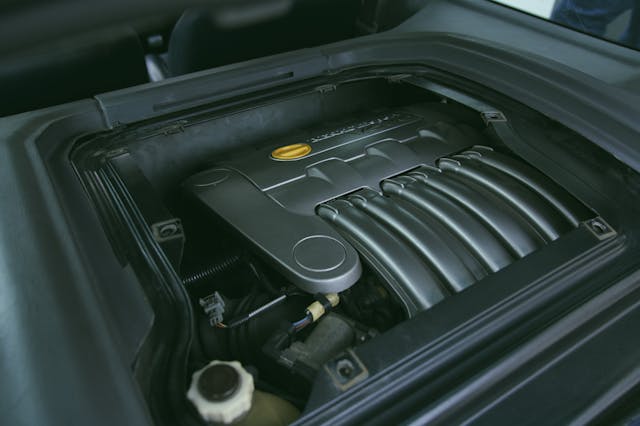
For two cars built on the same idea, by the same company, the Clio and the R5 are remarkably different. In the R5, the engine’s light vibration is felt mostly in your spine. The Clio’s V-6 is smoother but more present, coursing through more of the car. The more softly suspended Clio feels more docile at first. The V-6 shuffles out power far more manageably, and while the longer wheelbase is obvious from the first five feet, there’s also more pitch sensitivity—once the suspension compresses, the car is dicier to keep in a given state, less interested in your needs. It’s also more ungainly in quick transitions—jumpier off the brake, wonderfully soft in spring but recalcitrant in damper, always feeling larger than it is.
The lore here says things go big wrong at big speed, but on a flat asphalt pad, space-limited to around 50 mph, there’s only so much to see. There’s significant traction, and when the rear tires let go, it usually has nothing to do with your right foot. The front tires occasionally give up early. Sharp transitions at any speed can slam the car into its bump stops, and then you sit there, facing backward and stopped, trying to piece together what just happened.

If a moving R5 wants your wrists, the Clio needs slow fingers. Or big shoulders, cranking on that wheel, when the tires break loose. Sometimes the window for fixing a mistake is vanishingly small, and sometimes it doesn’t seem there at all. Once, after the rear snapped in a longer drift, whipping into a spin, I sat palms-up in the cockpit, blinking for a few seconds. Then I muttered the word “Really?” to no one in particular.
The Clio sat there idling, quietly, as if to say, Who, me?
At high speed, on pavement you didn’t know very well or in bad weather, an R5 would be a lot to handle, but predictable. The Clio feels frayed by comparison, deceptively calm at first but inconsistent in a way that would make nobody comfy. Set the V-6 car’s pendulum to swinging, you find yourself planning more for the unexpected. You feel more along for the ride in a way that has nothing to do with age or power or mass. Possibly not even physics or the logic of the lovely and unique people of France.
In almost 20 years of driving cars for a living, hundreds upon hundreds of test cars new and old in this country and elsewhere, I’ve never met anything quite like it. If the R5 is the best possible solution to the silliest design charge, the Clio feels like a consciously chosen set of suboptimal ends. You get the sense it would cannonball a longer and more jagged path through whatever you field or forest you might huck it into, where the R5 is small and fizzy enough that you could hang the thing from a tree in a fourth-gear off and it would still be sitting there, spinning like a top, a few inches from the road, a week after you left the pavement.
For whatever reason, the former is more comforting than the latter.
***
As with any recipe, the process of assembly here matters more than the ingredients.
The R5, a child of the Seventies and Eighties, can seem immediately chest-hair and intimidating; the Clio, born in the Nineties, is more immediately friendly, even if that friendliness doesn’t play out. The new car welcomes you to the party and tries to throw you out shortly after, where the old one punches you in the nose the moment you walk in the door, then offers an hors d’oeuvre.
That difference is everything. Hagerty’s Death Eaters tests are not designed to suss how these cars handle—that behavior has long been a matter of record—but to consider that information with a modern eye. Every new car sold this year carries a host of digital safety nets and is ostensibly safe for almost anyone to operate; incomplete engineering and trust in a driver’s judgement are simply less common. The baseline of skill once required to simply survive the operation of a high-performance car—don’t pitch an old Porsche into an off-ramp and lift, say, or punch the throttle without care in a big-block Chevy—is less common largely because that knowledge has become borderline irrelevant for most people. New cars simply don’t punish the same mistakes.
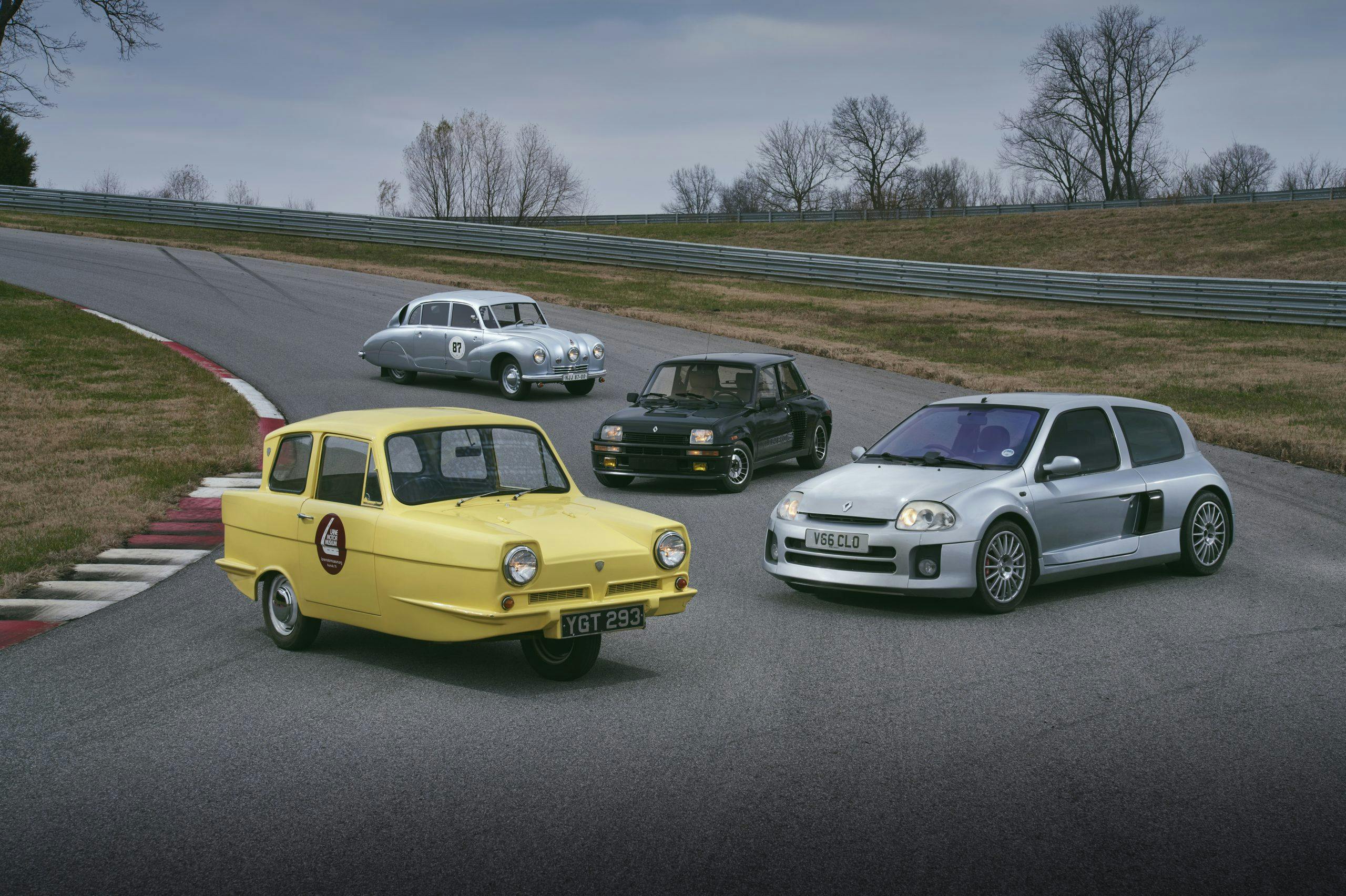
There’s no point in asking if we should return to the way things were, because we can’t. Even if we could, we probably wouldn’t. Who doesn’t want society to become safer and smarter with time? All else being equal, a crash in a new Mazda Miata is less dangerous than a crash in an MGB, just as an Airbus is safer than a Wright Flyer. For better or worse, we now know more than we did.
On that skidpad at NCM, I found myself wondering: Do we embrace machines like these for what they ask of us, or simply because, in an increasingly frictionless world, they ask something at all? In a hobby rooted largely in the joy of control, how important is risk, the chance that the machine will bite back?
Neither of these weirdos provides immediate answers, probably because the truth is rooted in personal preference and tolerance. Cars like these are best appreciated not for what they threaten to take away, but for what they offer—a reminder that you are alive and paying attention, and that good things rarely come to those asleep at the wheel.
***
1985 Renault R5 Turbo 2
Production: 1983–1986
Engine: 1.4-liter turbo I-4, 160 hp, 155 lb-ft
Transmission: 5-speed manual
Drive: Rear
Weight: 2140 pounds (est.)
Known For: Good power and monster turbo lag, engine in the cabin with you, plus a personality best described as “twitch.”
The Reality: Big work when hustled, but predictable. Only dangerous if you get in over your head.
Lesson: Driver, know thyself.
***
2002 Renault Clio V6 Phase 1
Production: 2001–2003
Engine: 3.0-liter V-6, 227 hp, 221 lb-ft
Transmission: 6-speed manual
Drive: Rear
Weight: 2950 pounds (est.)
Known For: Being something like an R5 Turbo, just… more.
The Reality: Slightly less terrifying than the hype would suggest, at least on a 50-mph cone course. The open road is probably another matter.
Lesson: You can’t go home again, but you can do a half-decent impression of the lunatic who lives there.









